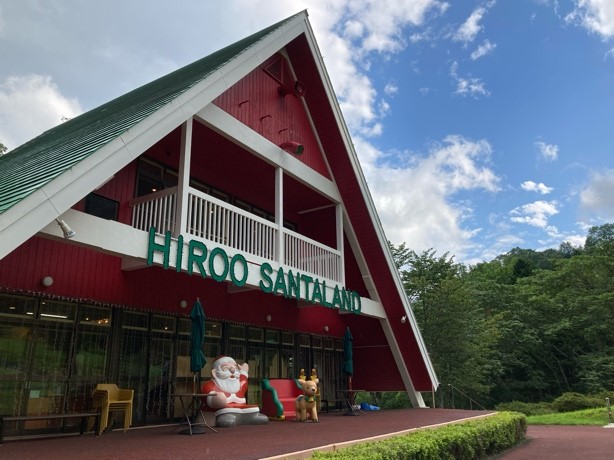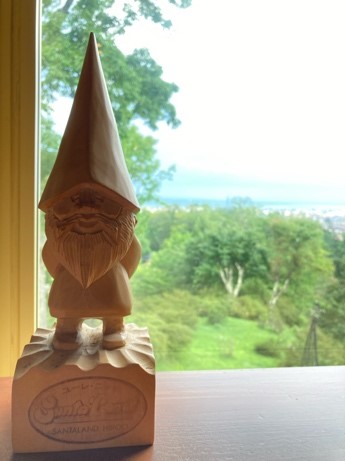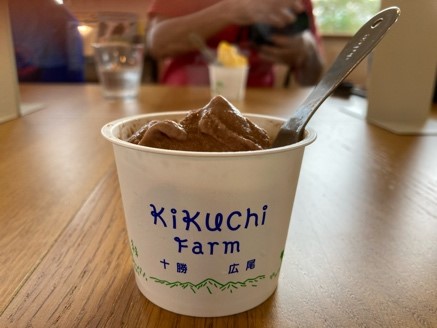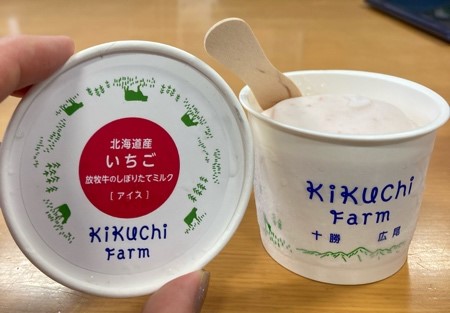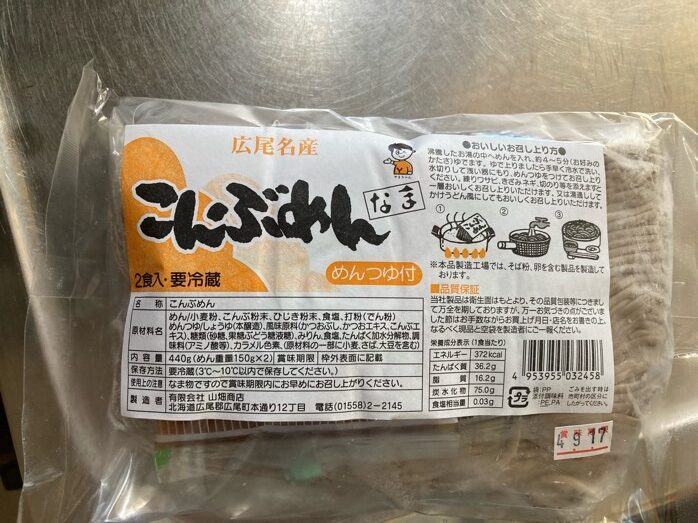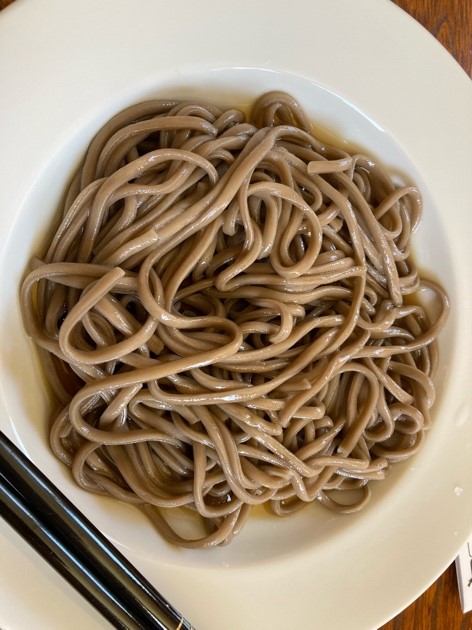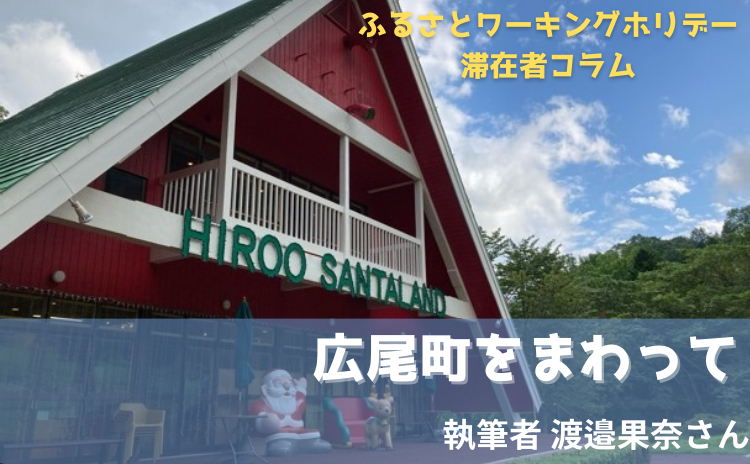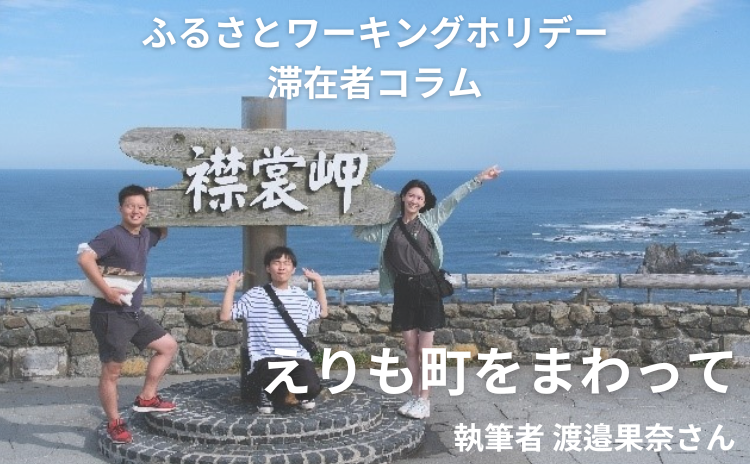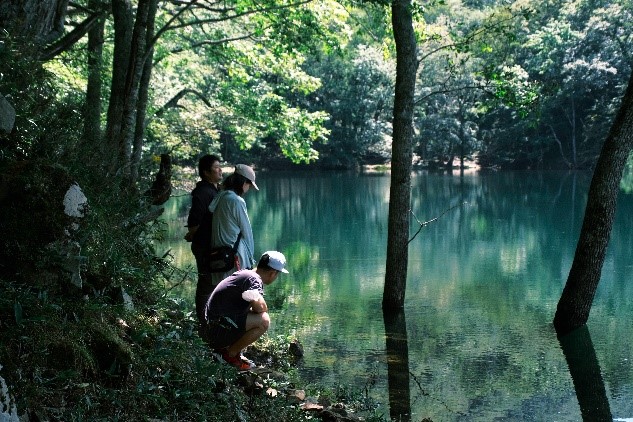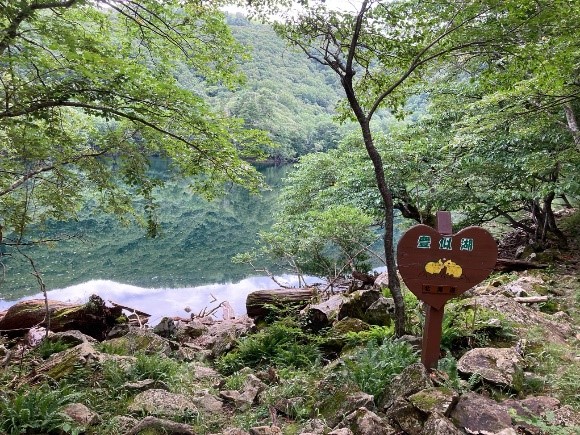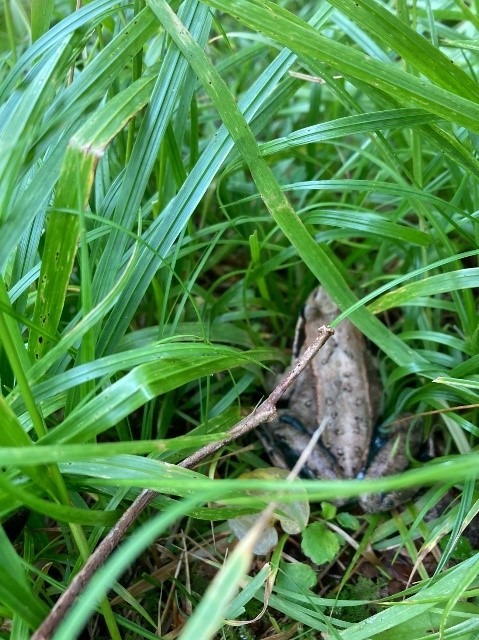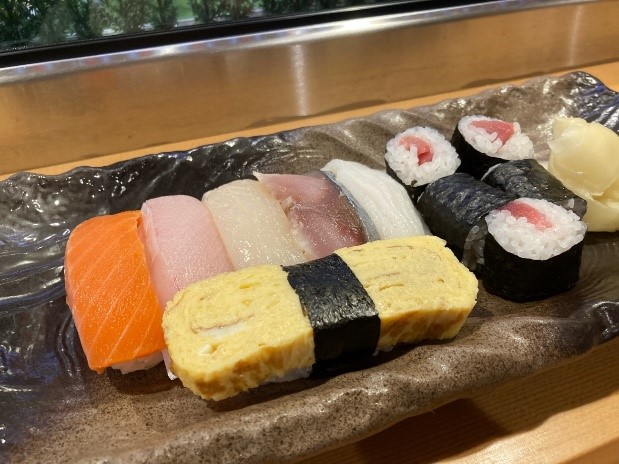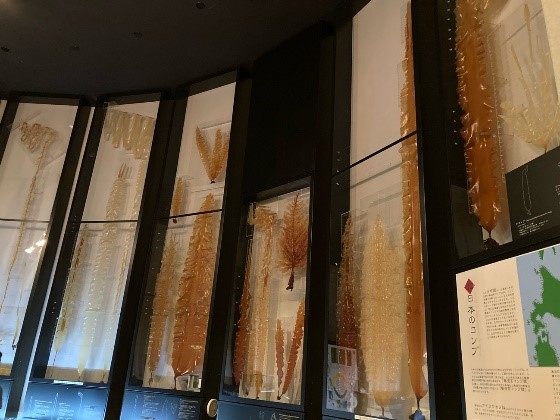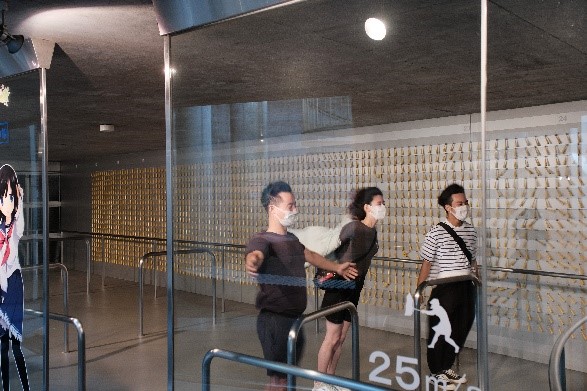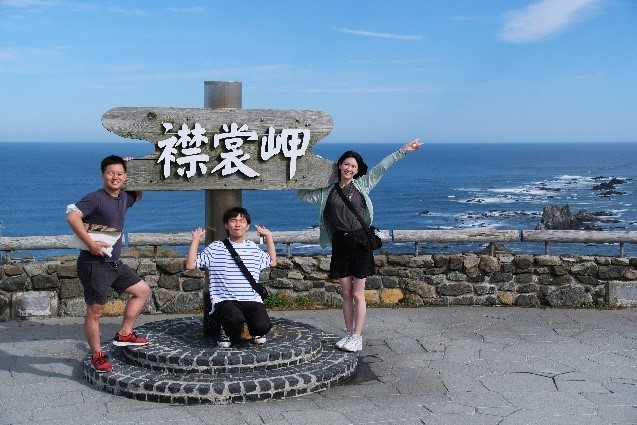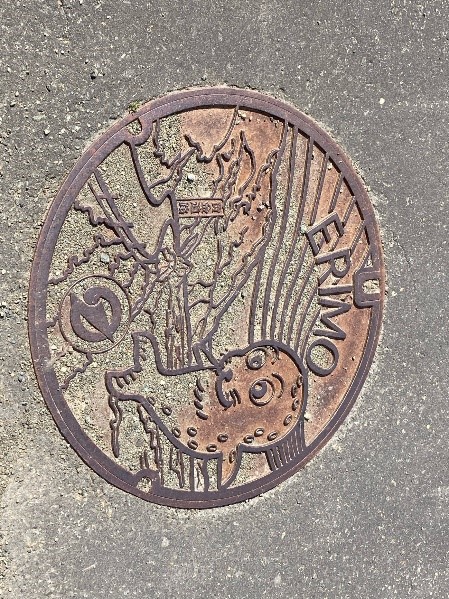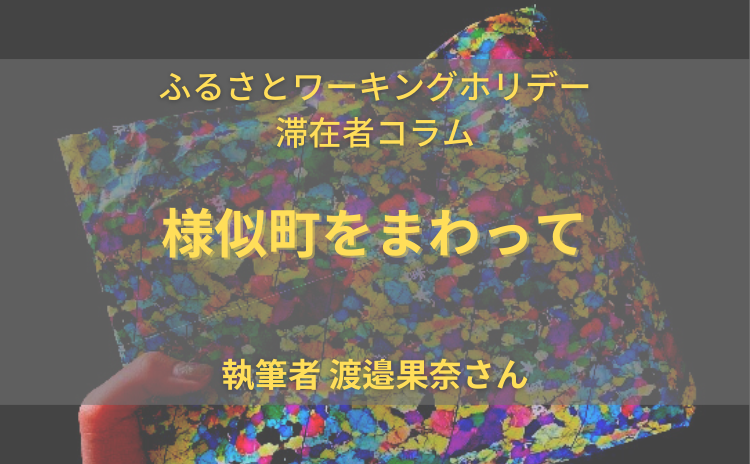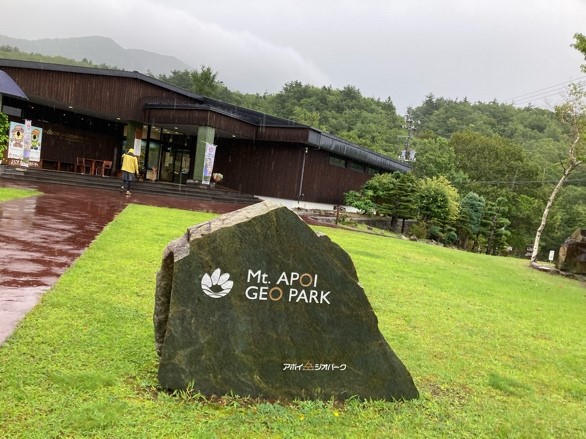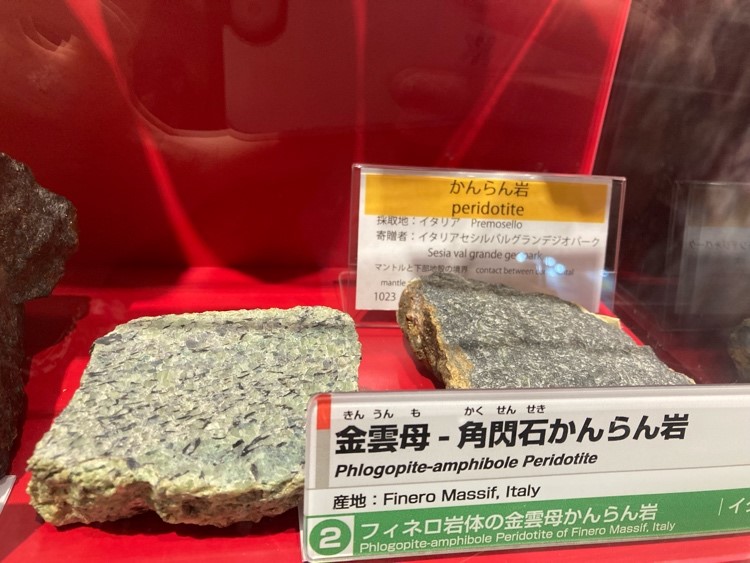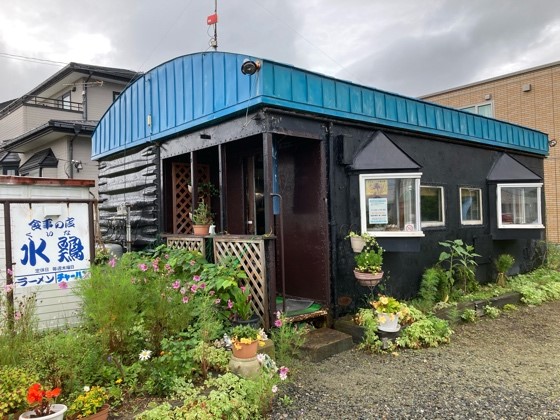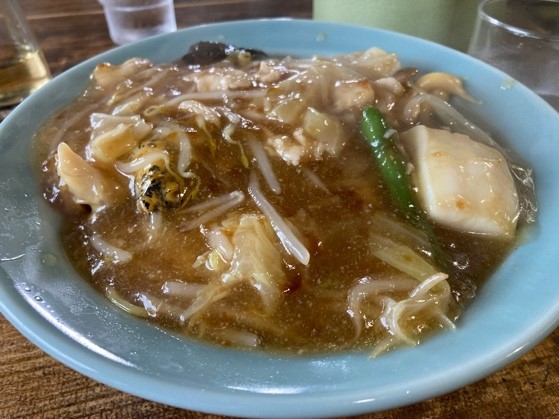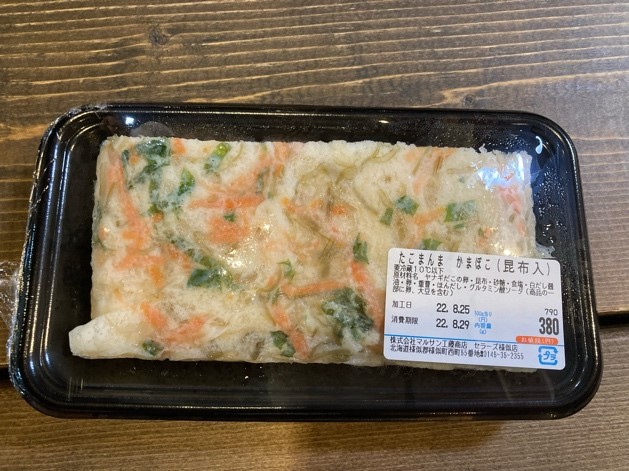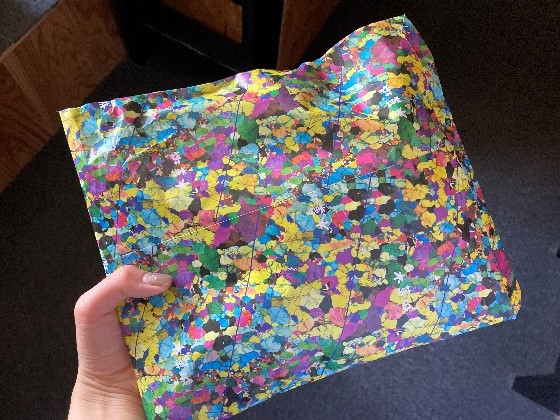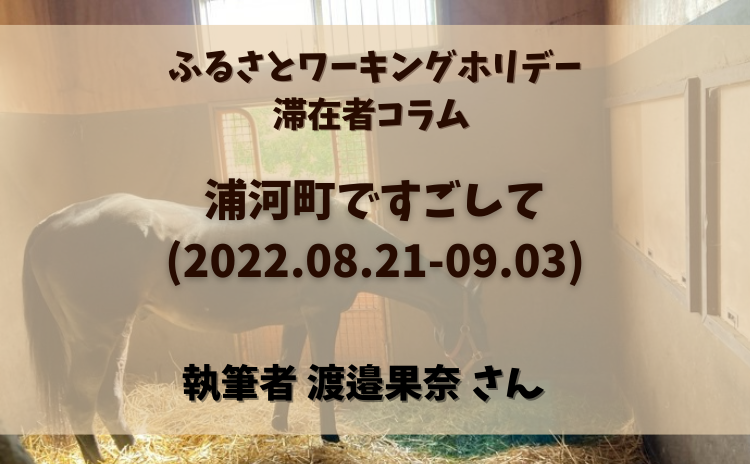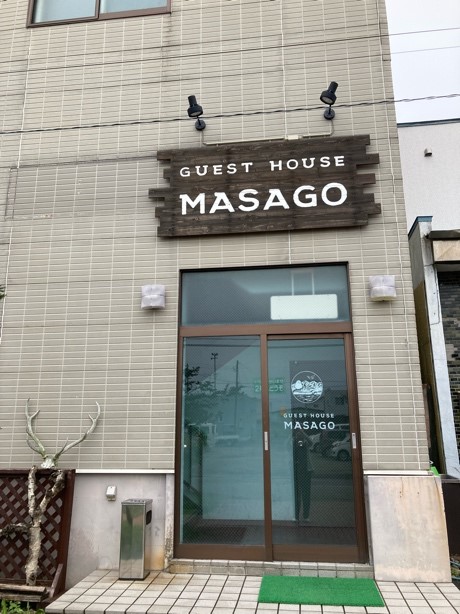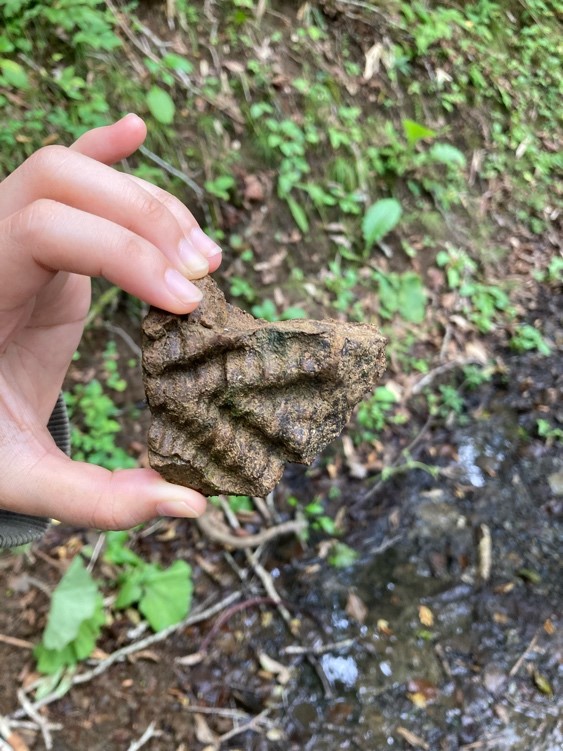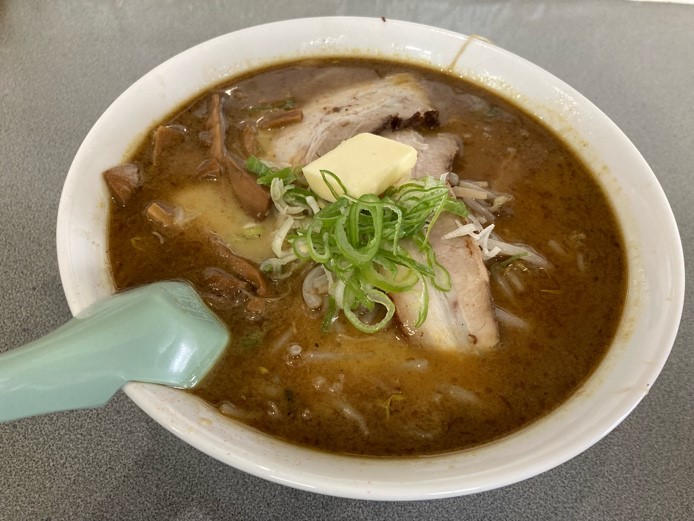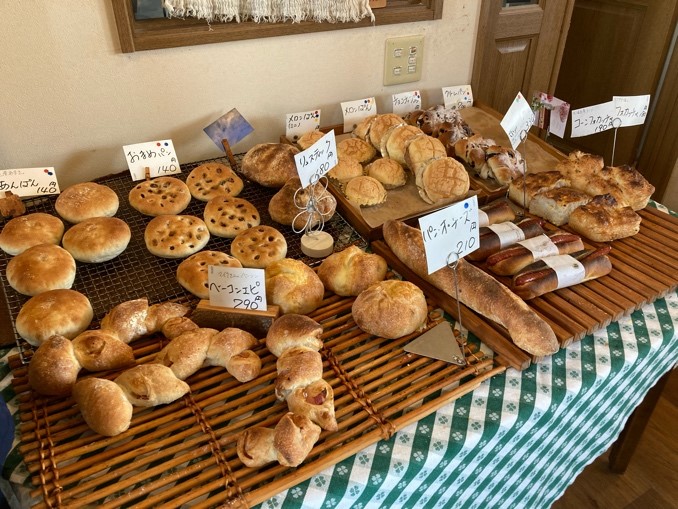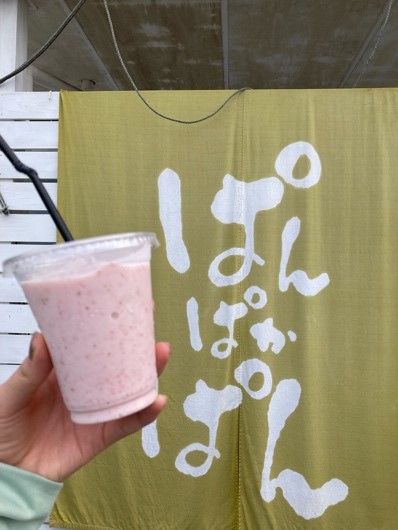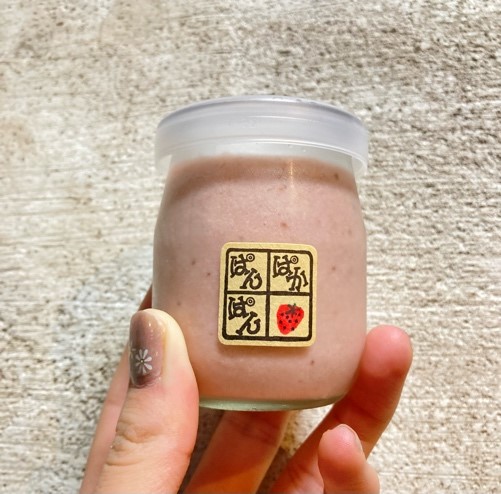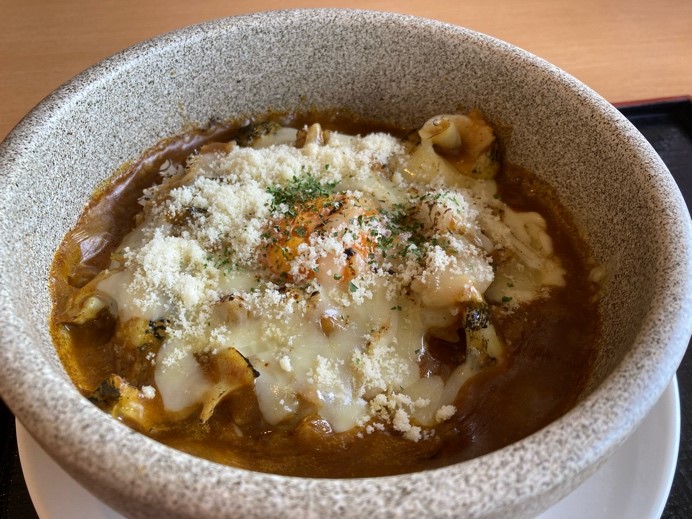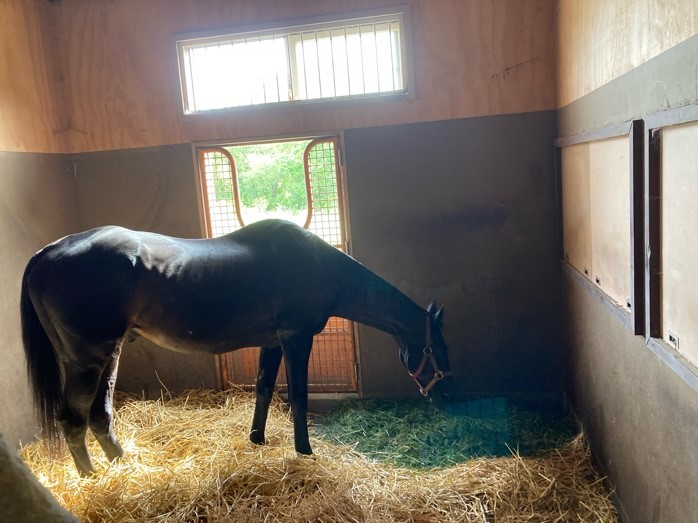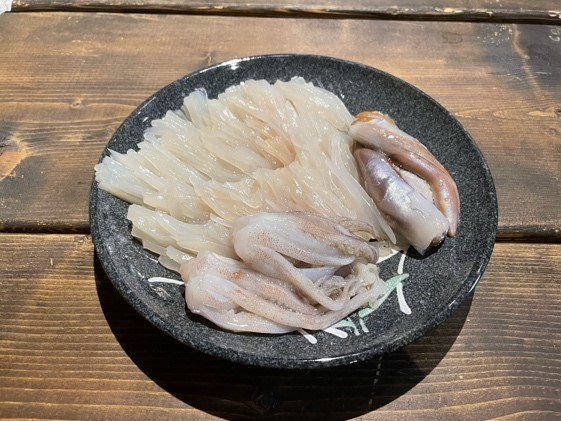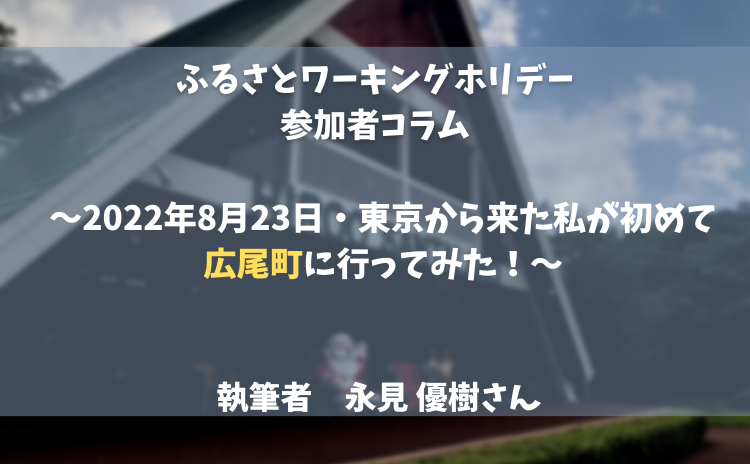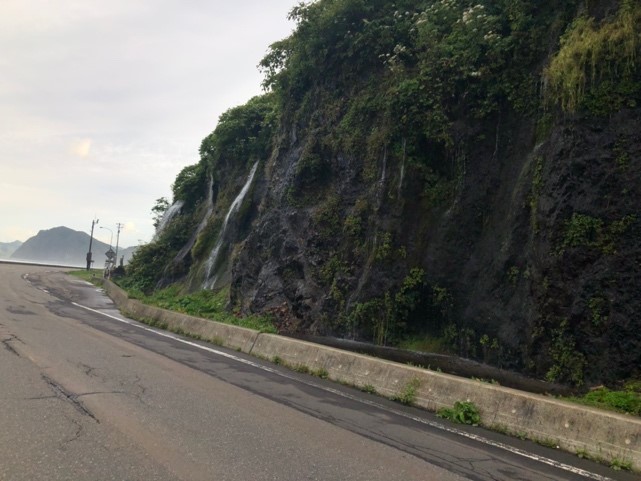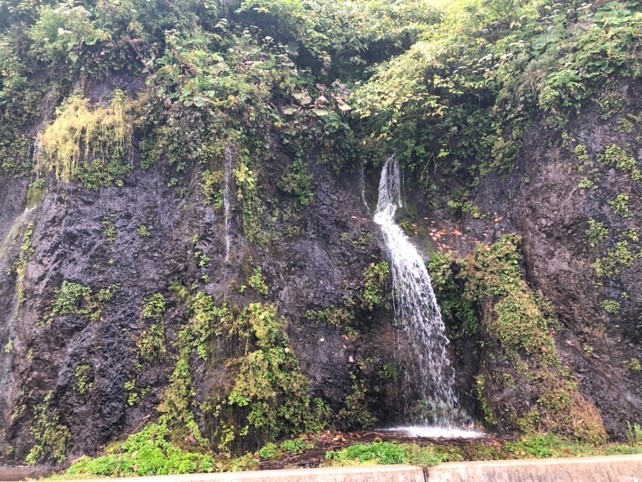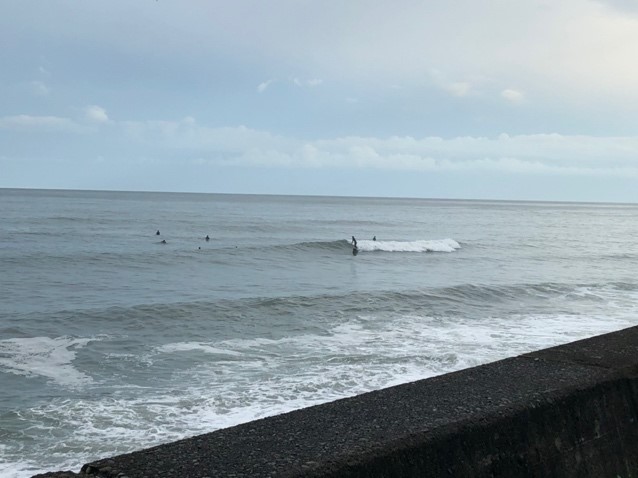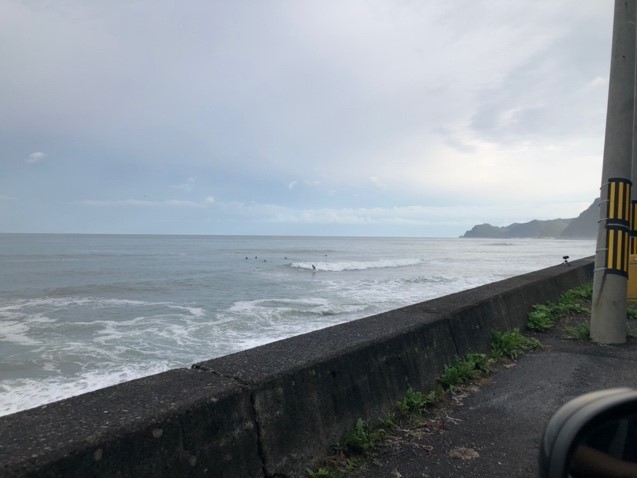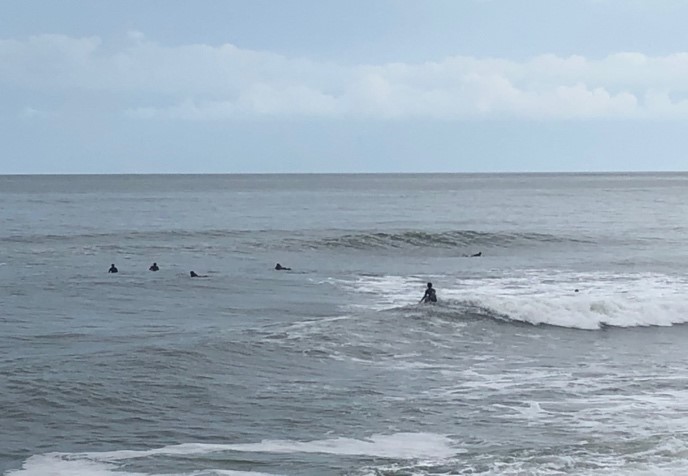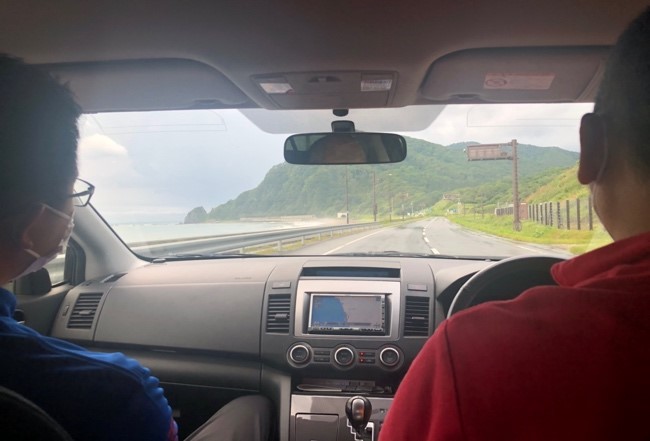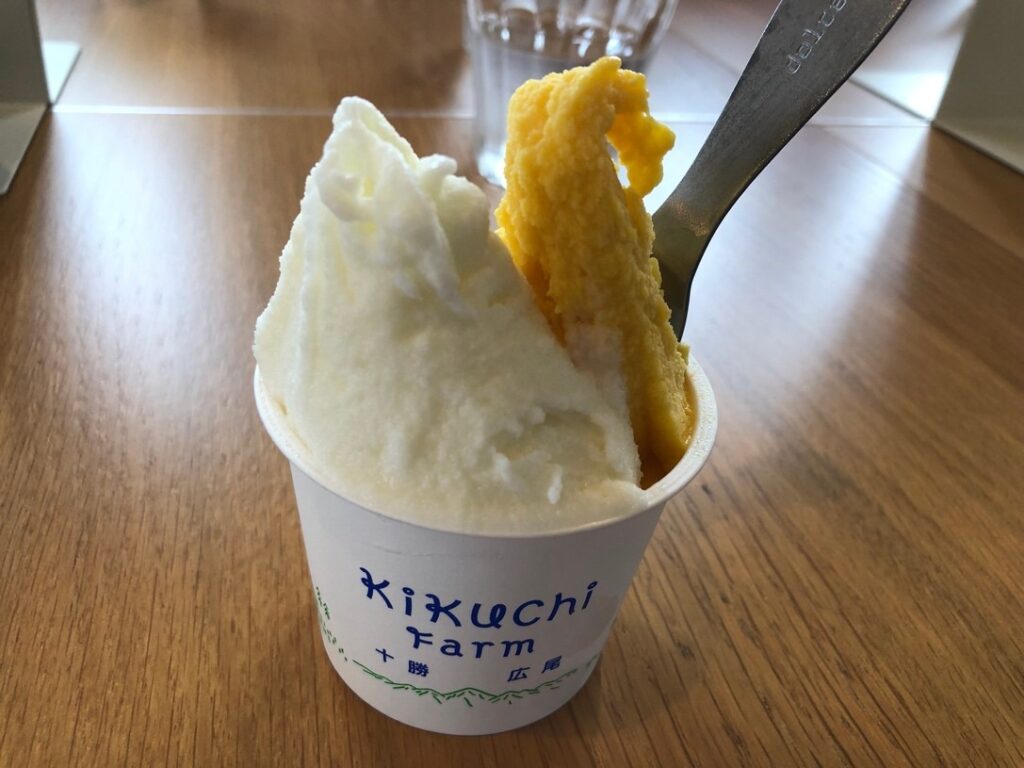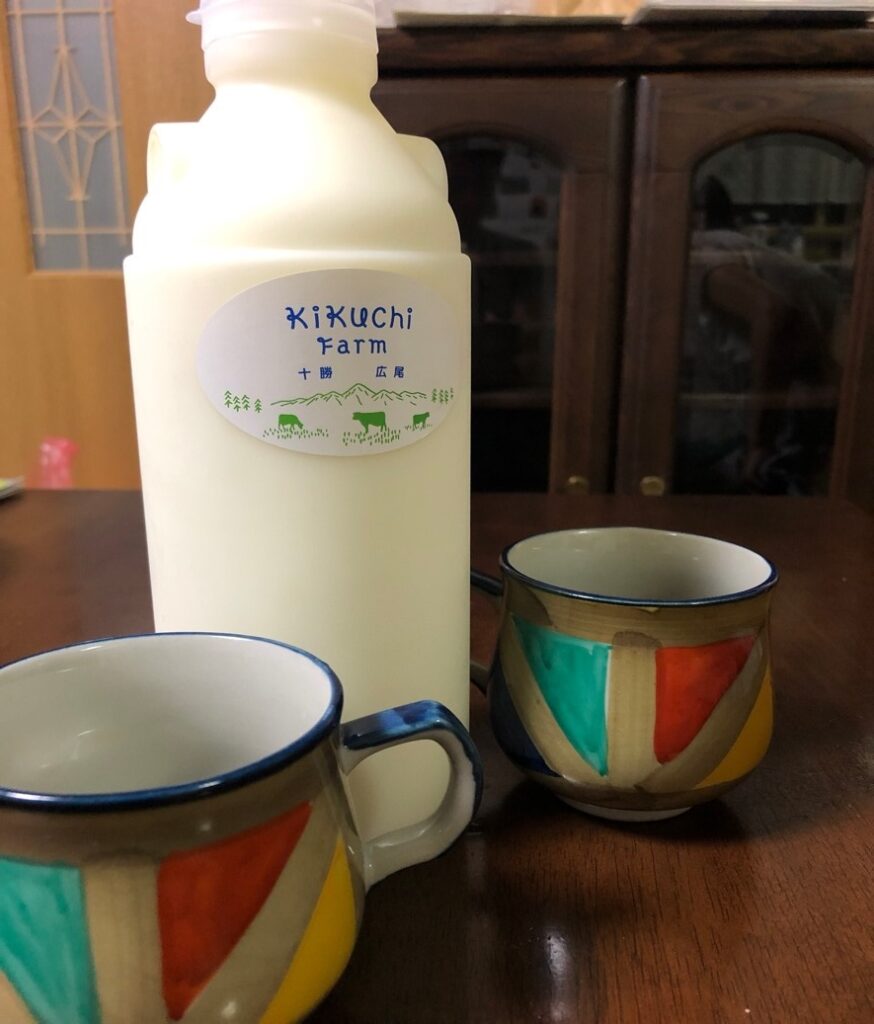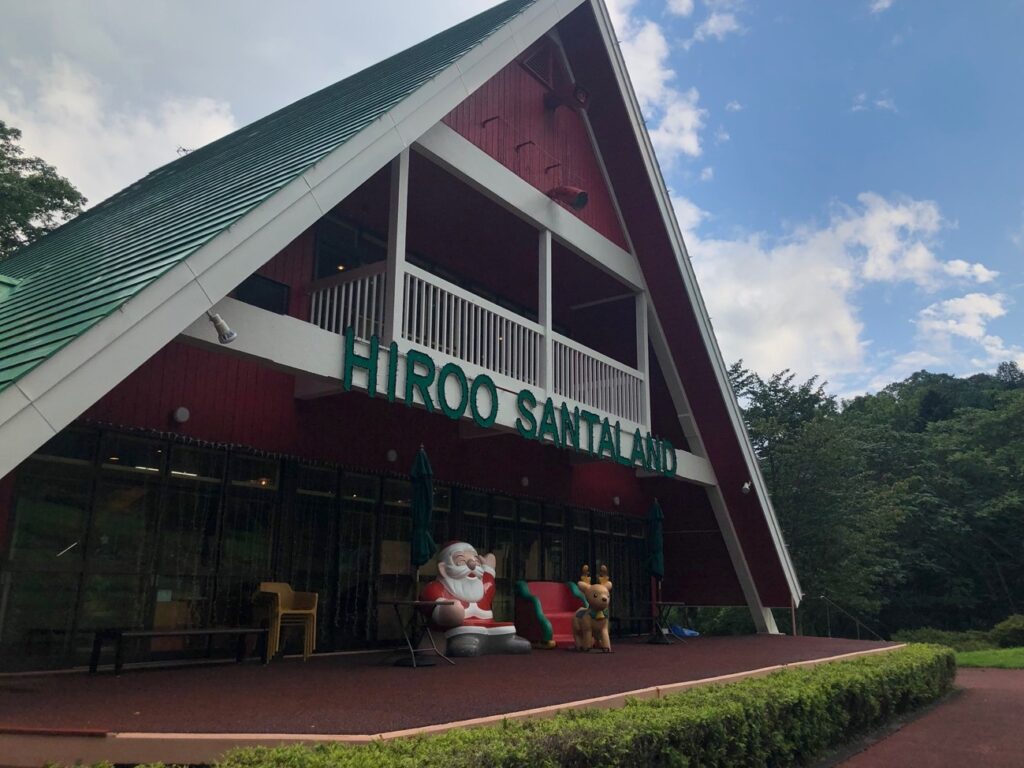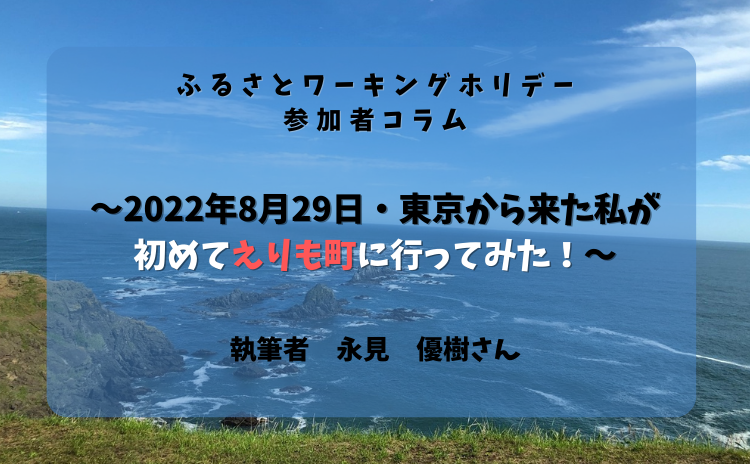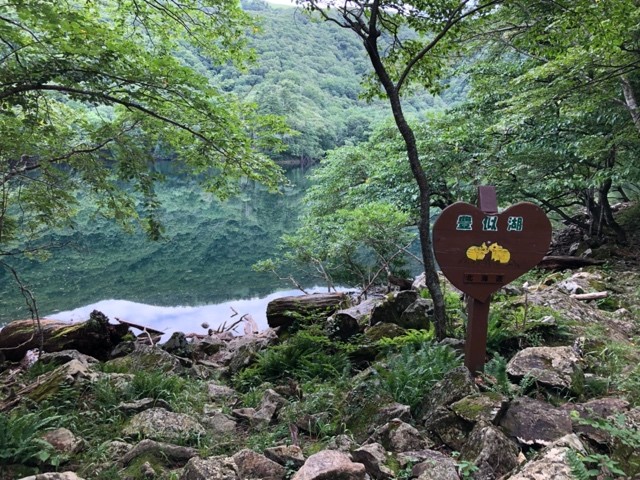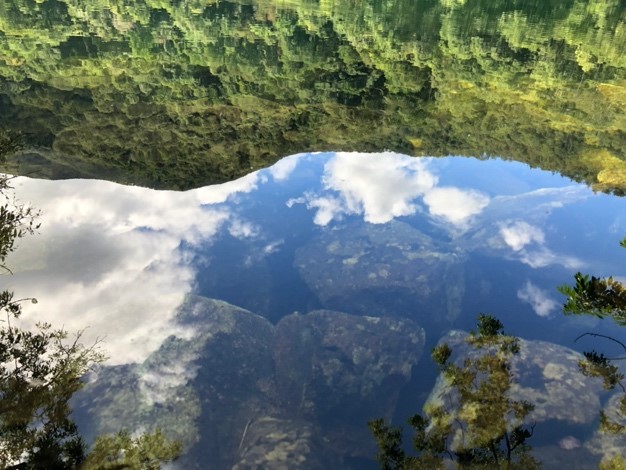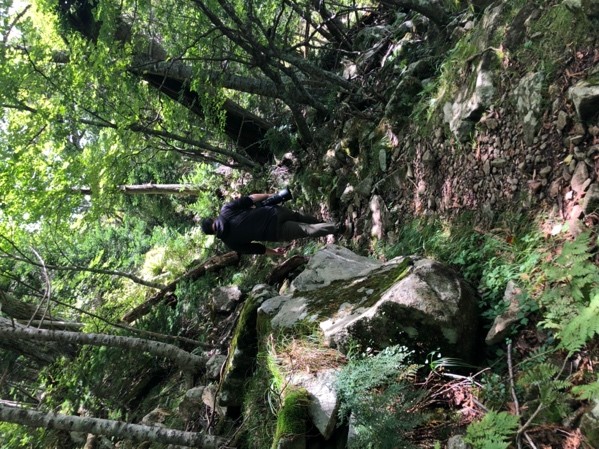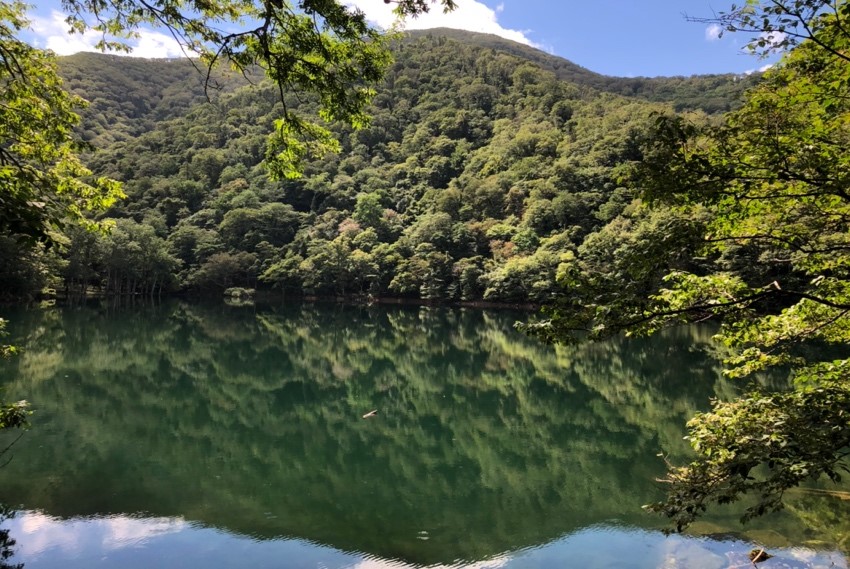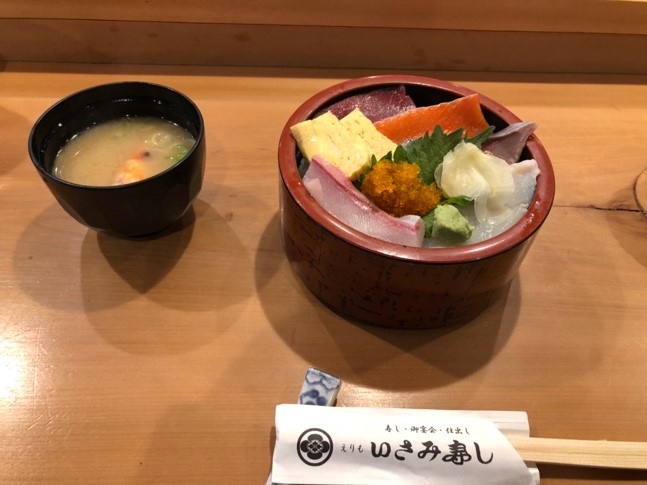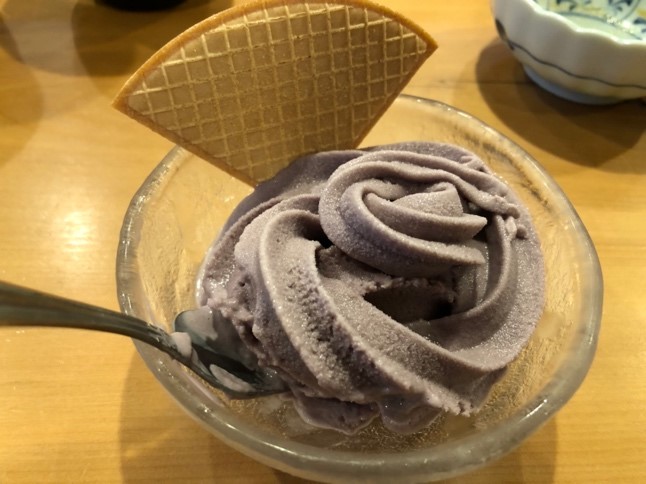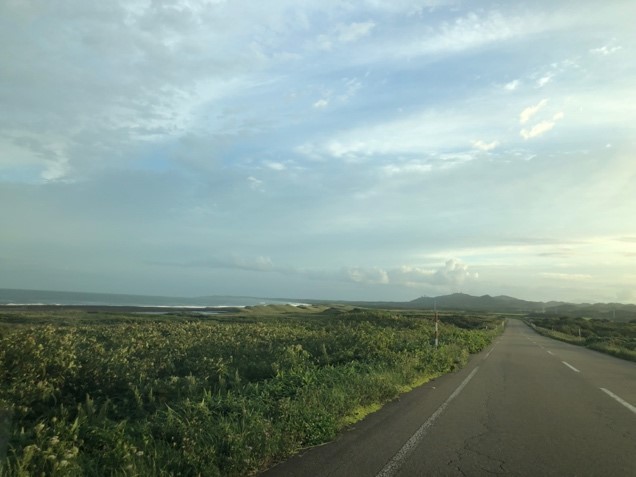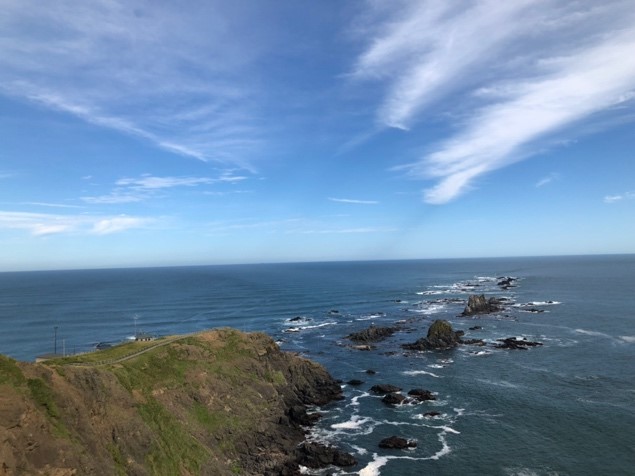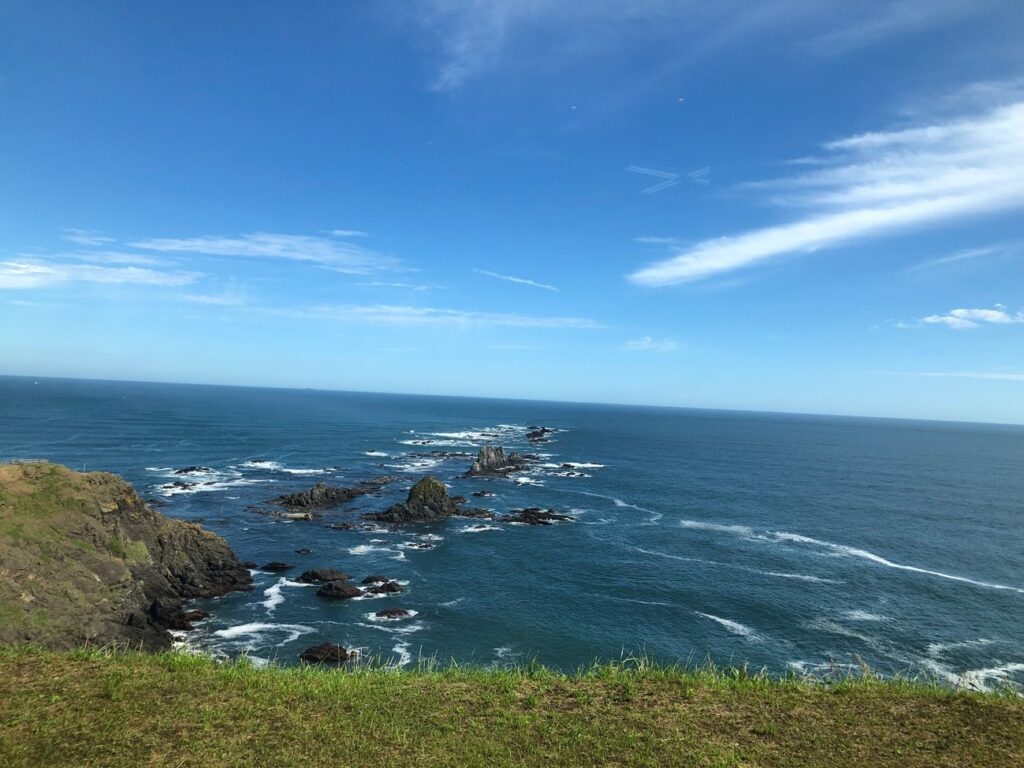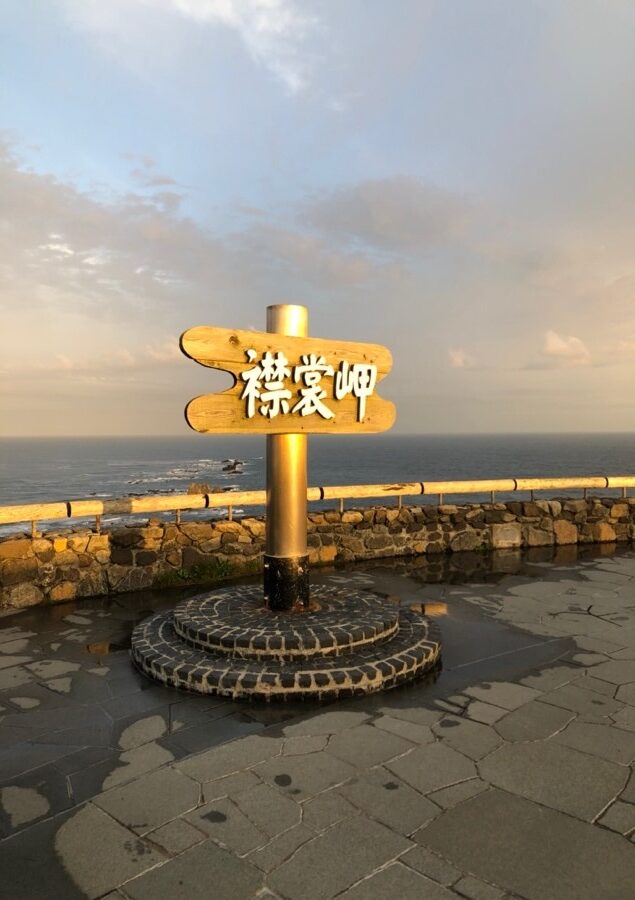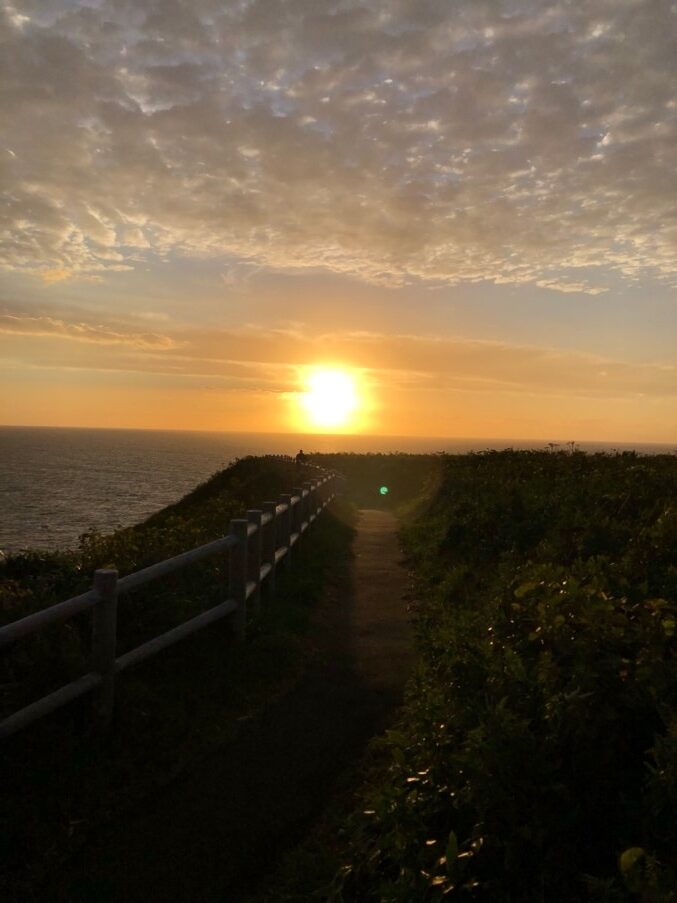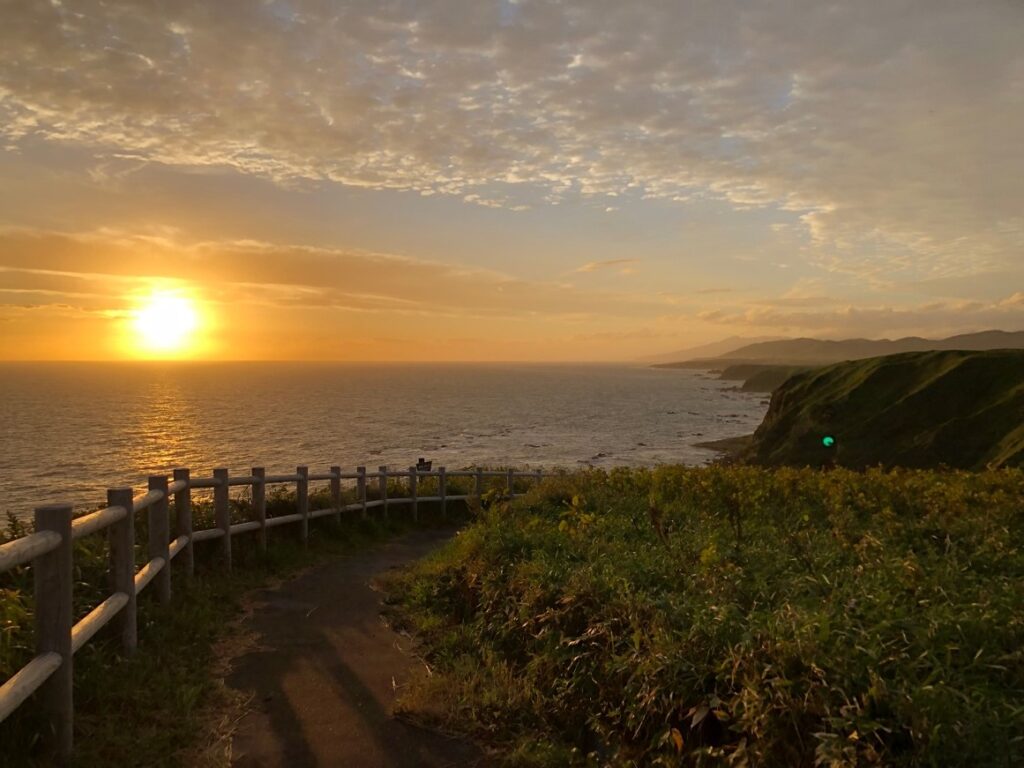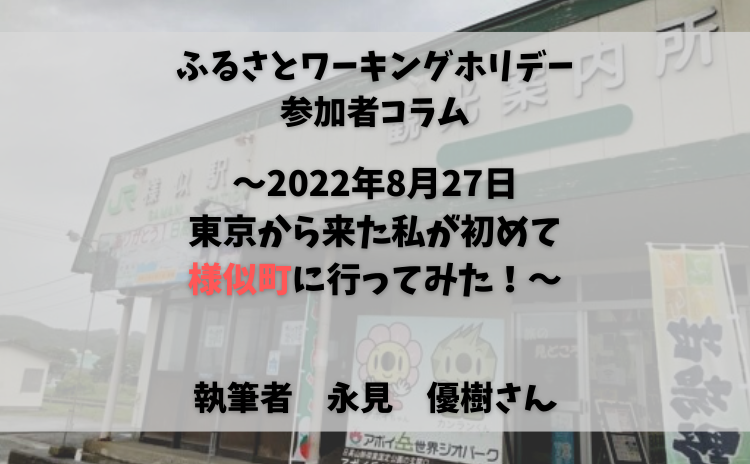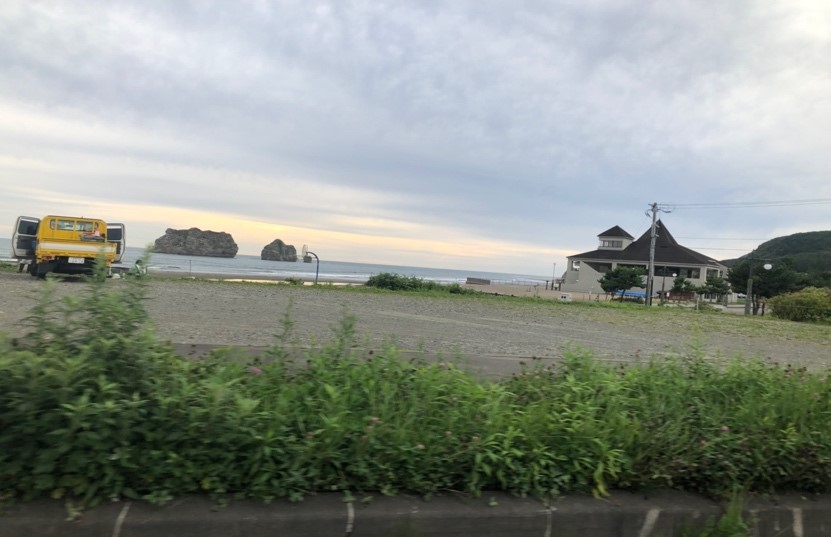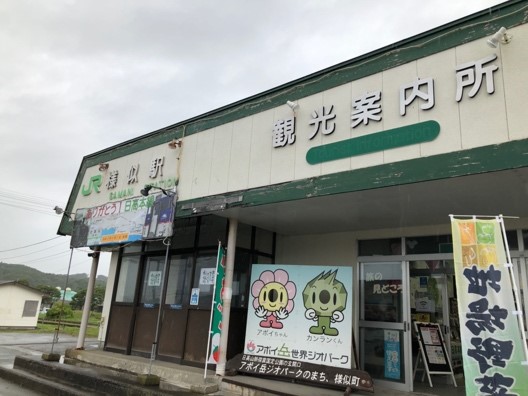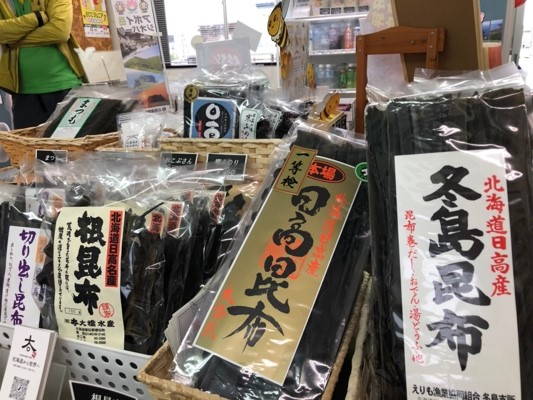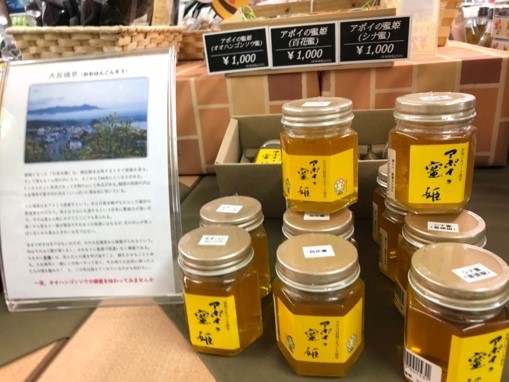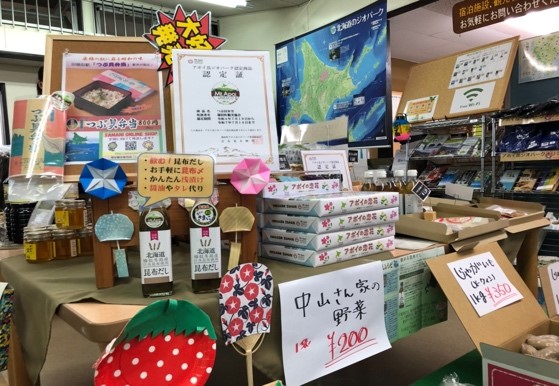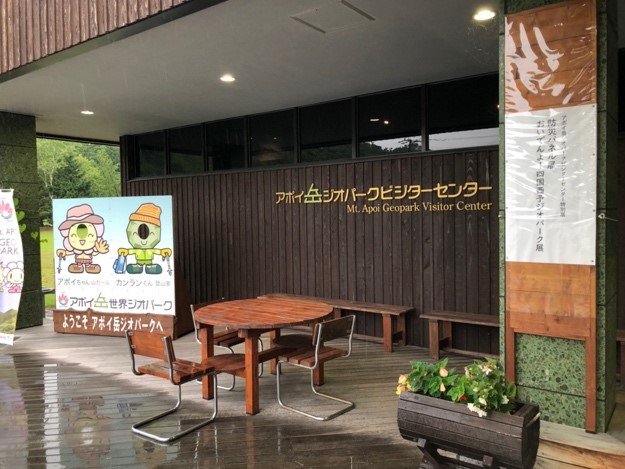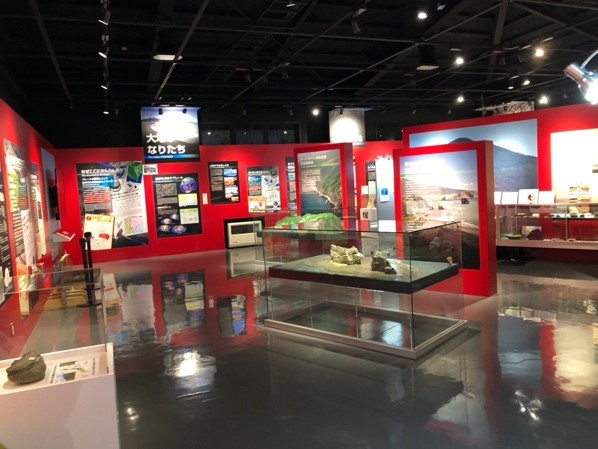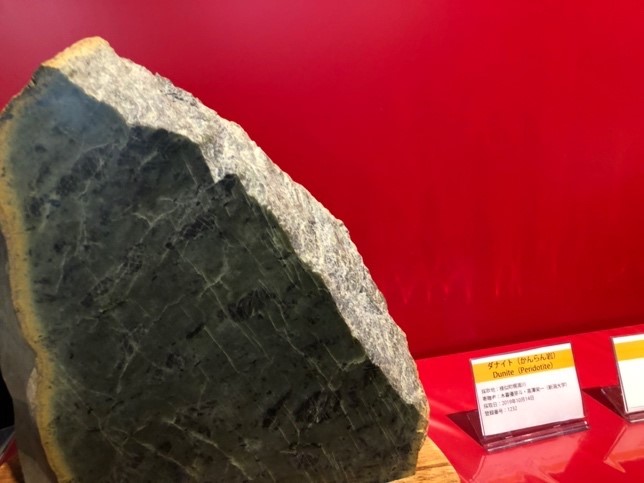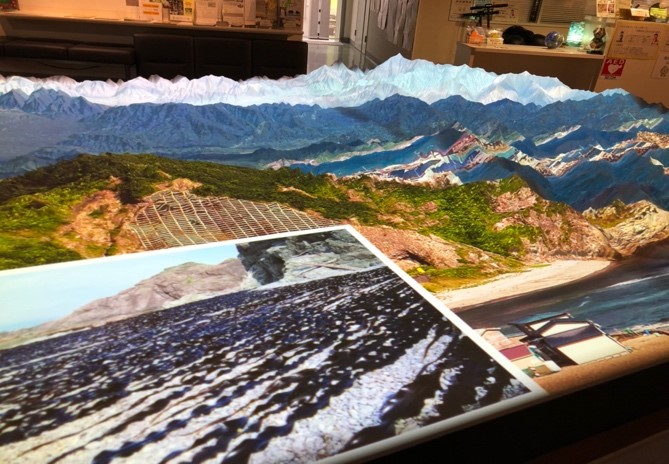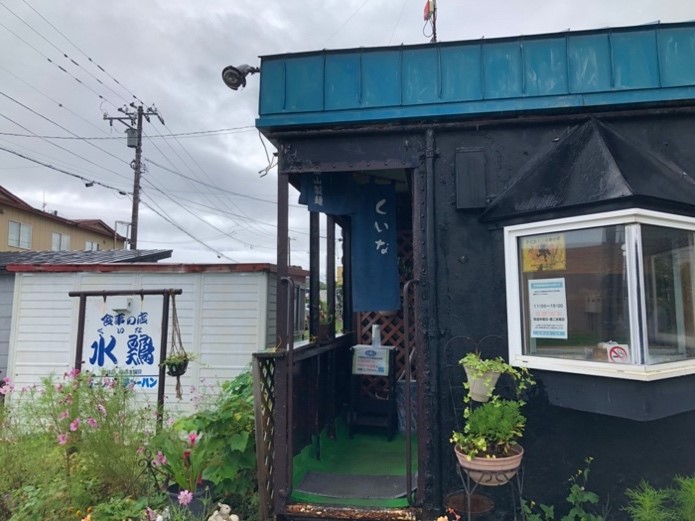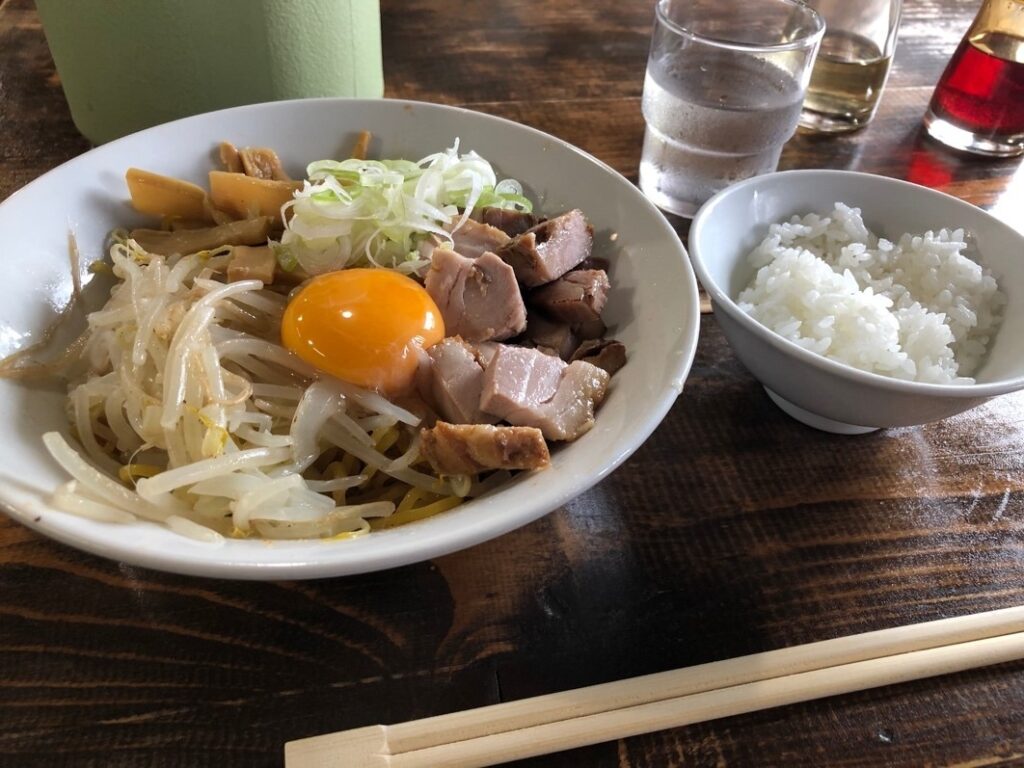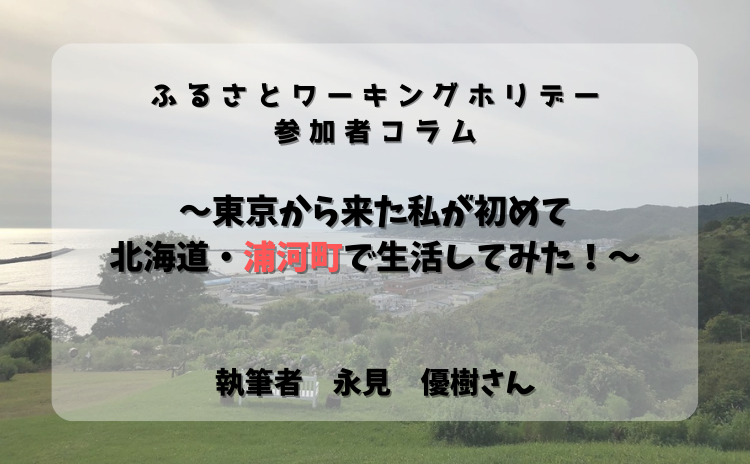Urakawa Town has been making various projects to promote the creation of a relational population.
These include the Urakawa Life Experience Project, the Furusato Working Holiday Project, and the Telework Promotion Project.
Among those projects, we would like to introduce the columns of two people who toured four Tongari towns while working and staying. This project was held at the Urakawa Tourist Association for about two weeks under the Furusato Working Holiday program sponsored by the Japanese Ministry of Internal Affairs and Communications.
In collaboration with Urakawa High School, the two participants were asked to assist the junior-year high school students in their integrated learning class (theme: Sustainable Development Goals-SDGs) and to interview restaurants in town. Here we share their reports on the Tongari Road area from non-residents’ perspectives.
*Furusato Working Holiday is a program for people from urban areas to stay in a rural area for a certain period of time, working and earning an income while experiencing the local lifestyle through interaction with local residents. Furusato generally means “hometown”. However, it is sometimes used as a rural area where the population is unbalanced because the young generation leaves for an urban area.
(Written by Yuki Nagami, who stayed with his wife from August 21 to September 3, 2022)
No1. My Urakawa Column
~ My first experience living in Urakawa, Hokkaido, coming from Tokyo! ~
(August 21-September 3, 2022)
1 Very first visit in Hokkaido
I have just landed in Hokkaido for the first time in my life. I will be staying in Urakawa Town, Hokkaido for about two weeks as a part of the Furusato Working Holiday sponsored by the Japanese Ministry of Internal Affairs and Communications. Looking at the scenery from the airplane and the scenery on the way to Urakawa Town, I was just taking in the excitement entirely, saying “I am really in Hokkaido!!” And yes, it is a much cooler temperature compared to Tokyo.
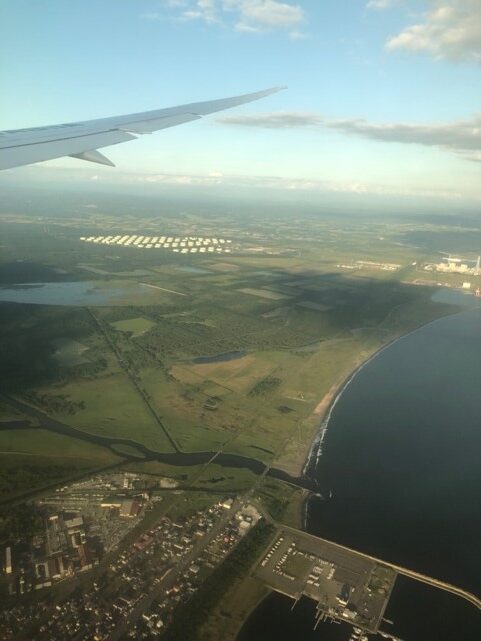
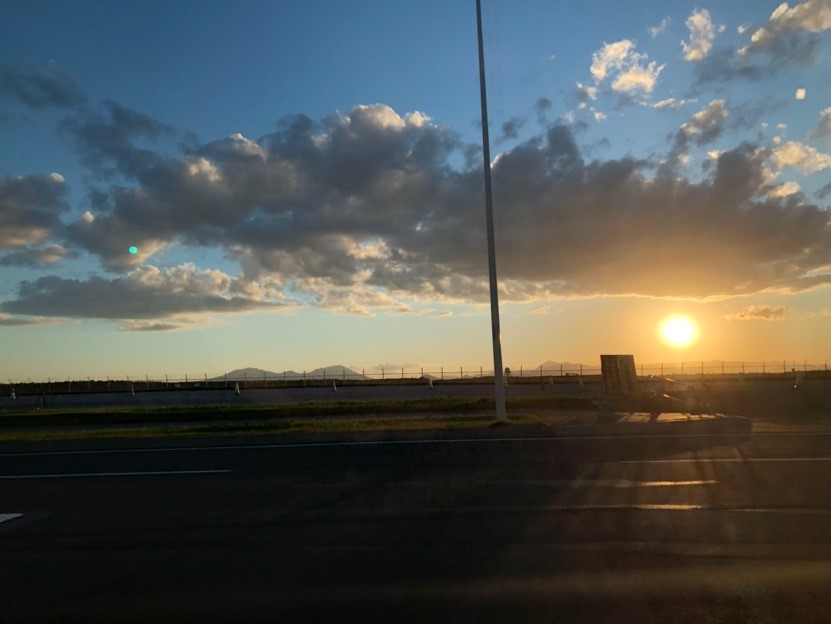
My journey in Urakawa Town began in a house by the sea. This temporary housing is made just for people who visit here with the thought of moving to Urakawa, so that they can experience what it is like to live there.
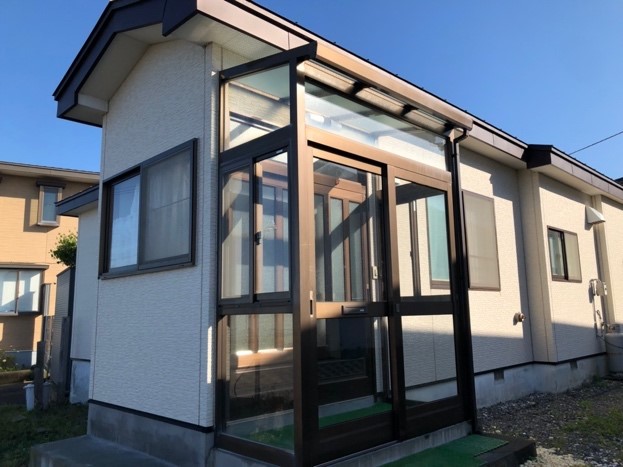
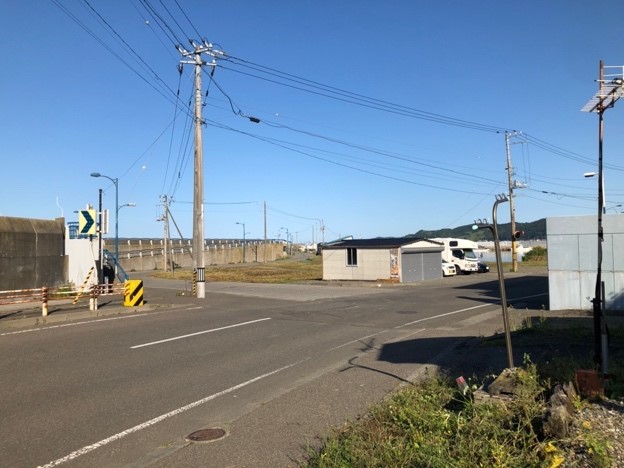
The house is conveniently located just a few minutes’ walk from the ocean, and is fully furnished, making it a perfect place to experience the Urakawa lifestyle!
My hosts, Mr. Nakagawa of the Urakawa Tourist Association and Mr. Fukui of the Urakawa Town Hall, guided me around the town and arranged opportunities for me to interact with local residents. They also shared a lot of advice on daily life in Urakawa as well as Urakawa’s cuisine with us, and we were able to enjoy our first Urakawa living.
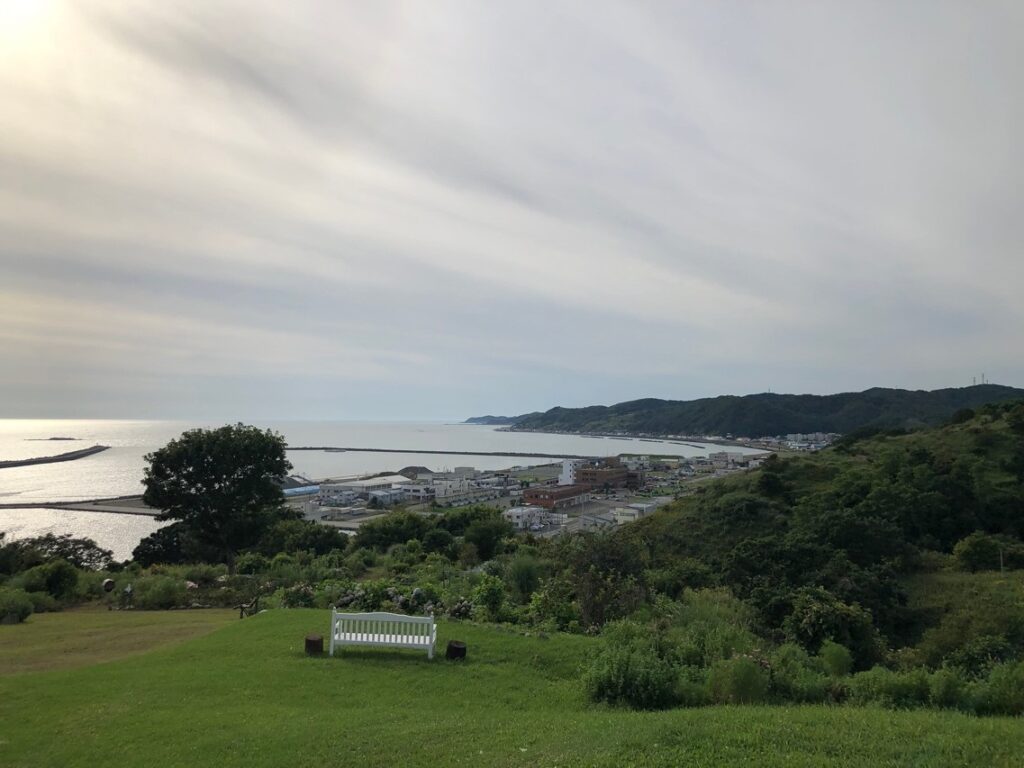
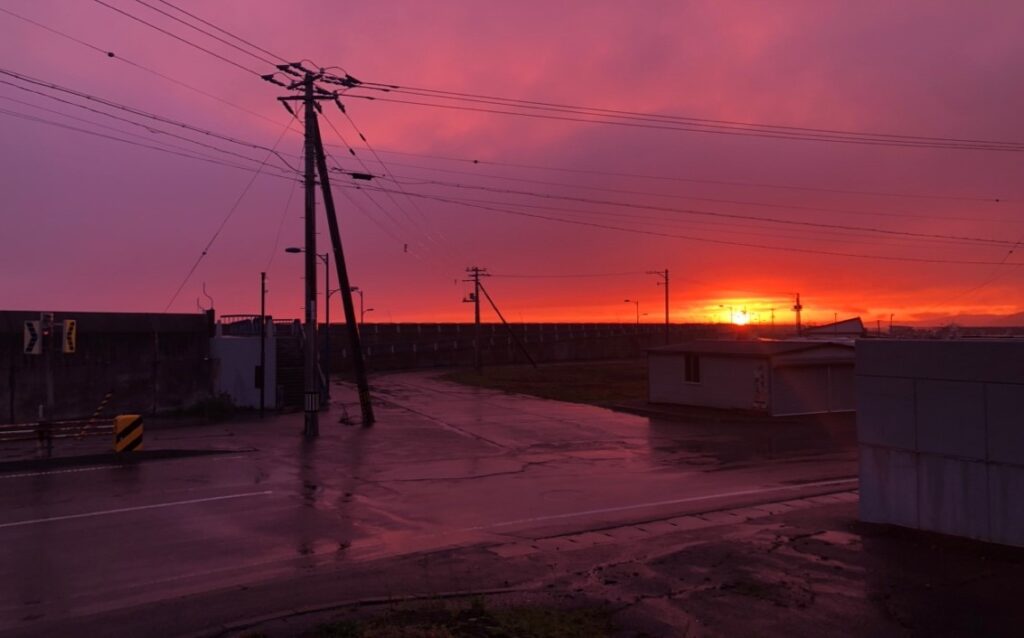 (The view of the sunset from our house)
(The view of the sunset from our house)
2 Urakawa, the town of Thoroughbred
Urakawa is so well known as a horse-producing area that it is called a thoroughbred town. As we headed from the ocean side of Urakawa to the mountainous area, we could see many ranches where horses were being raised. Especially at the Urakawa Yushun Village A E R U, visitors can meet famous horses that have retired from the sport.
Urakawa also has other facilities for raising and training racehorses as well as horse riders, making it a sanctuary for horse racing enthusiasts. Although I am not familiar with horse racing, I was in love with the horses on the farm for their size and toughness. Even without being familiar with horse racing, seeing the horses and experiencing horseback riding was a new and enjoyable experience.
The environment of Urakawa town, where one can see a mountainous landscape with abundant nature just a short distance from the seaside, is truly an attractive place where one can enjoy the luxury of both the sea and mountains.
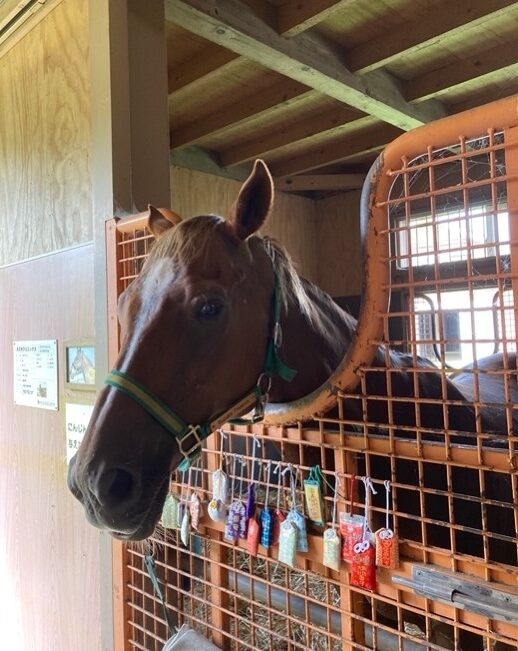 (Suzuka Phoenix)
(Suzuka Phoenix)
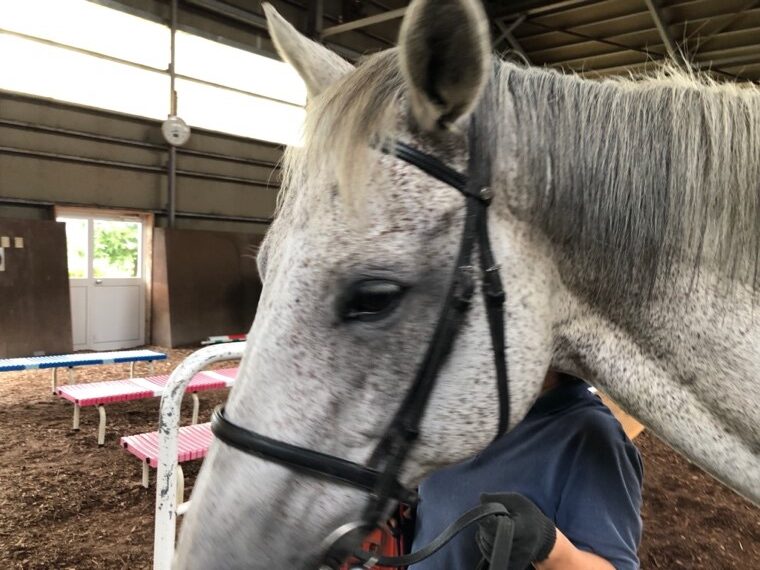 (Tama, who took me for a horseback riding experience)
(Tama, who took me for a horseback riding experience)
3 The starry sky of Urakawa
One evening, I looked up at the sky and saw the most beautiful starry sky that I had never seen in Tokyo. Such a beautiful starry sky! I was so impressed that I could not help contacting Mr. Nakagawa of the Tourist Association to express my amazing experience. He came right away to take pictures of us even though it was late at night. As it turns out, Mr. Nakagawa sometimes comes alone to take pictures of the starry sky too, he says.
As I looked at the starry sky, I thought to myself, “There must be a lot of people who love and cherish the natural beauty that mother nature wants to present to us.” That evening, I felt that the nature of Urakawa and the people of Urakawa who embrace it are one of the charms of the town of Urakawa itself.
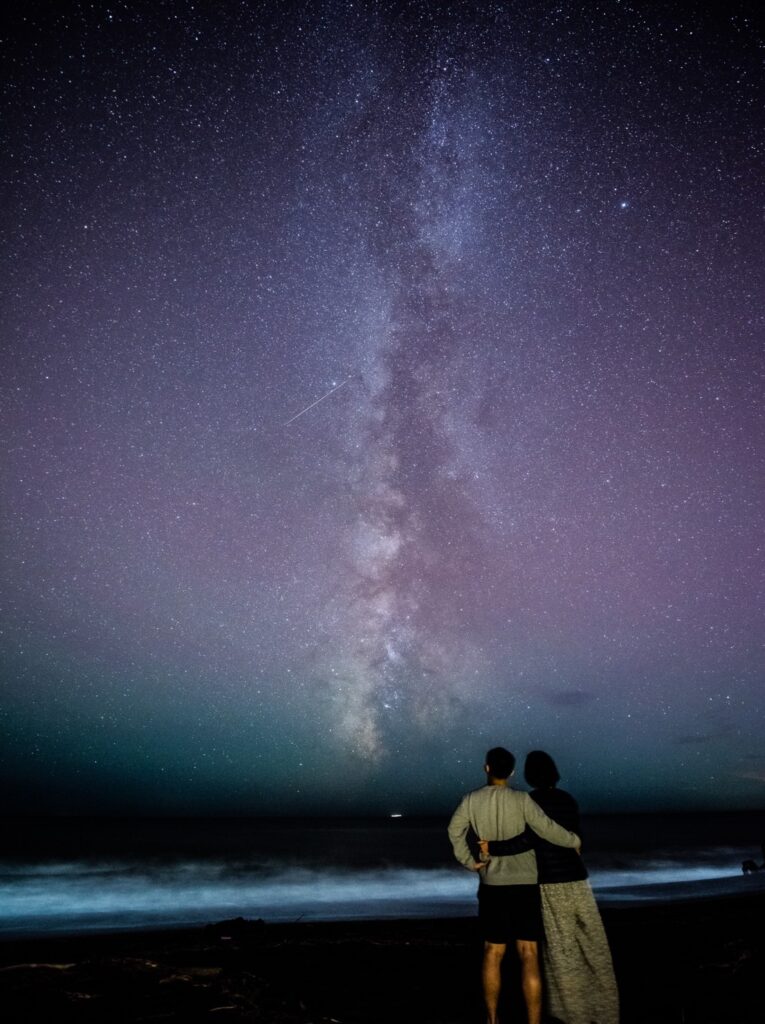
(This is our most favorite picture. Can you find a shooting star among all of the stars?)
4 Urakawa cuisine and local foods
During my time staying in Urakawa, I was blessed with many opportunities to eat at local restaurants. Beyond my imagination, there are numerous restaurants in the town of Urakawa, and I never had any trouble choosing a restaurant for my daily life! Each restaurant has its own character, and they were all very delicious! I highly recommend that you make the Urakawa cuisine rounds when you visit Urakawa.
We also cooked for ourselves, of course, during our time living in Urakawa, and often used local farmers’ markets to buy our produce. It was very satisfying to be able to purchase fresh, tasty, locally-grown vegetables at reasonable prices! It was a good personal experience for me, as I had never had the experience of buying produce at a farmer’s market where vegetables are sold directly by the producer. There are also local butcher and fish markets. I found it valuable to have access to fresh local ingredients like this.
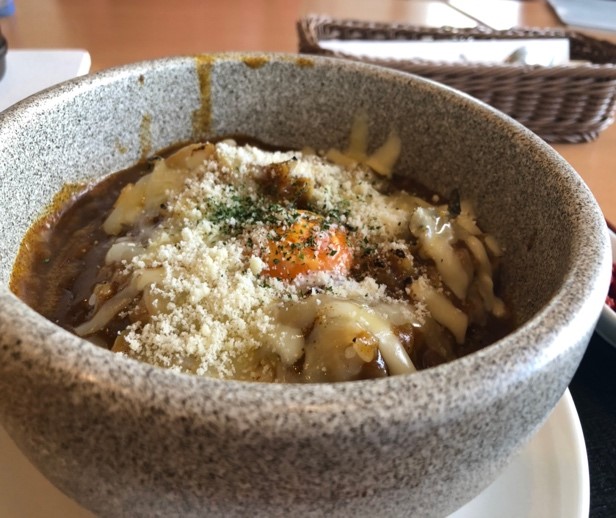 (A E R U, Tsubutama Ishiyaki Curry)
(A E R U, Tsubutama Ishiyaki Curry)
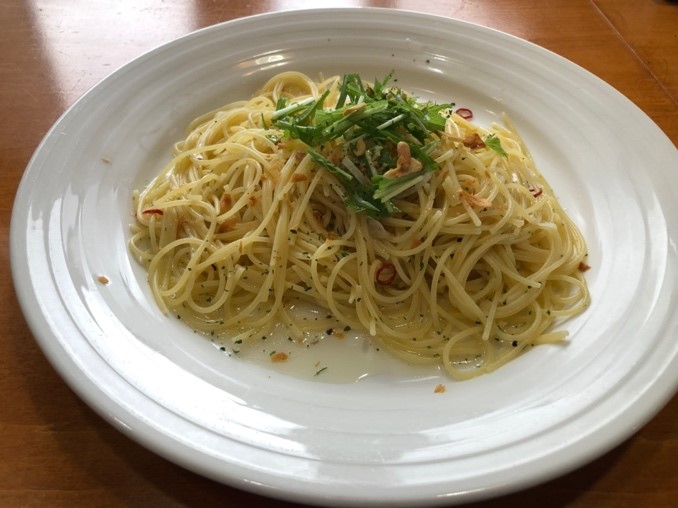 (Trattoria Eyam, pepperoncino)
(Trattoria Eyam, pepperoncino)
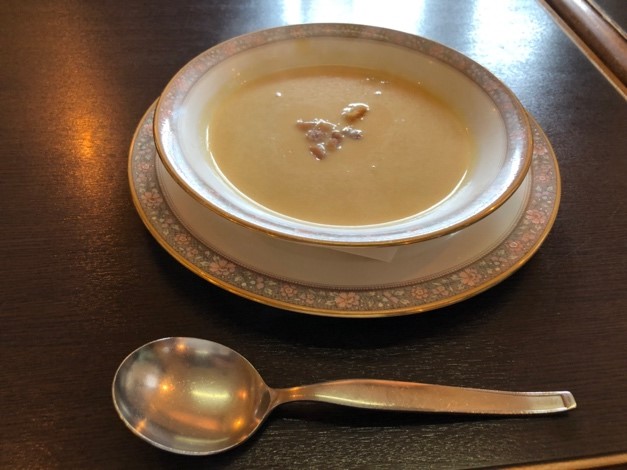
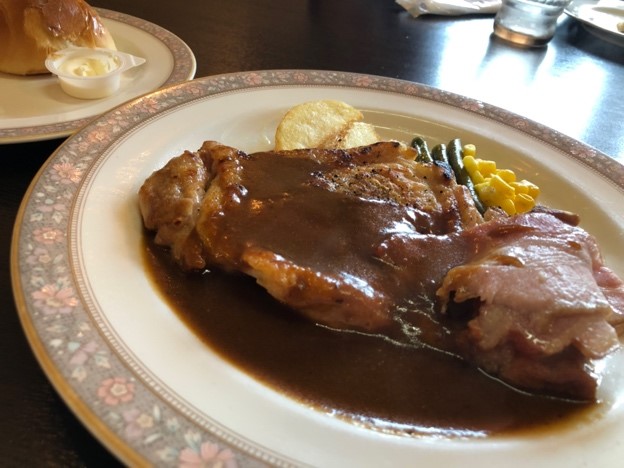 (Safran Dor ・ Corn Soup with Grilled Chicken and Bacon)
(Safran Dor ・ Corn Soup with Grilled Chicken and Bacon)
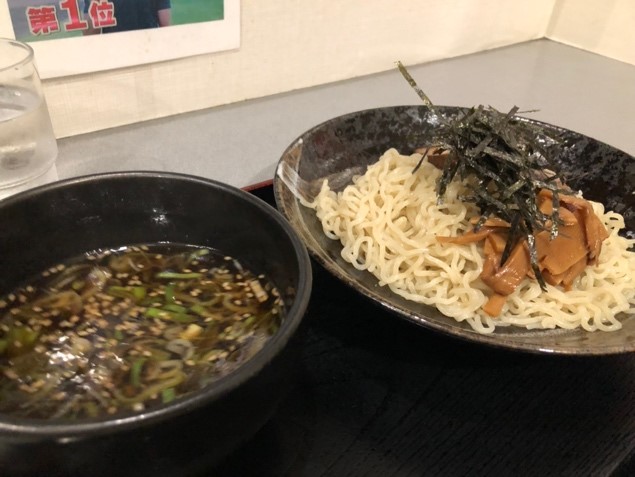
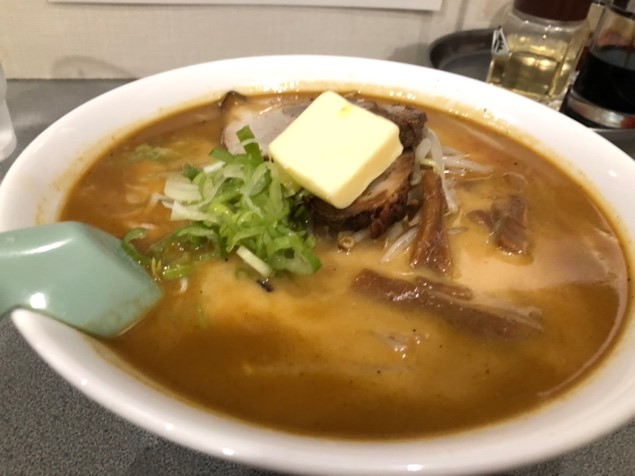 (Ramen Masago・Hidaka kelp Japanese-style dipping ramen, special milk miso curry ramen)
(Ramen Masago・Hidaka kelp Japanese-style dipping ramen, special milk miso curry ramen)
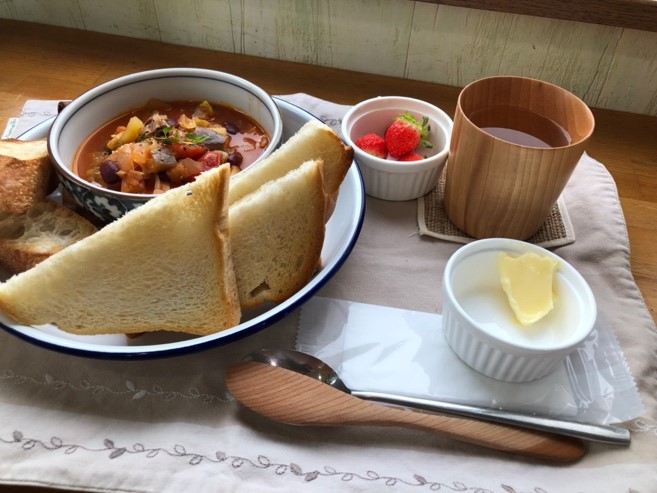
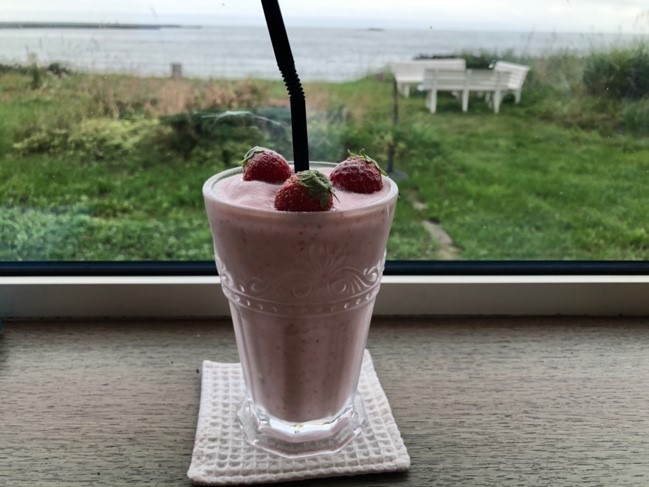 (Pampaka Pan・Minestrone lunch set, Suzuakane Strawberry Smoothie)
(Pampaka Pan・Minestrone lunch set, Suzuakane Strawberry Smoothie)
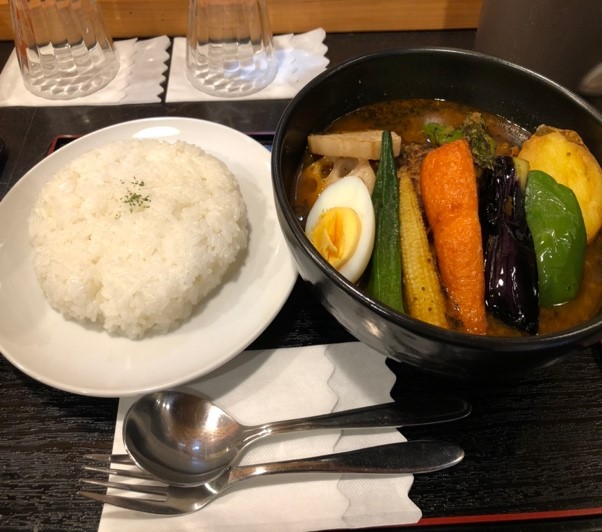
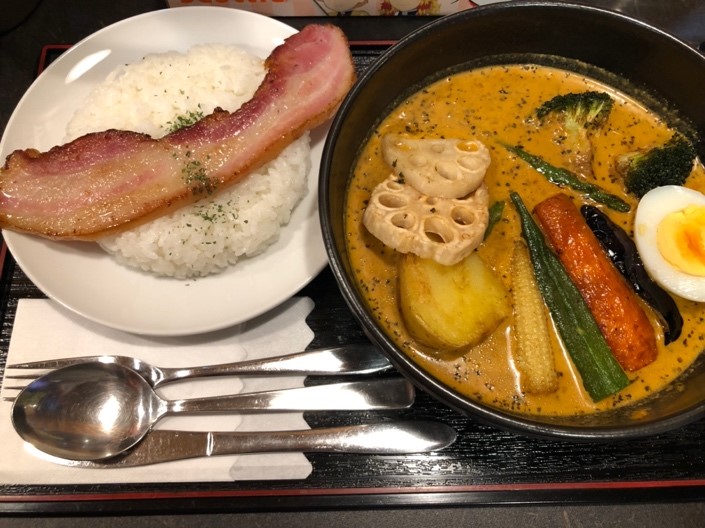 (Sacchan House・Deluxe Soup Curry, Bacon Curry)
(Sacchan House・Deluxe Soup Curry, Bacon Curry)
※ Suzuakane→Summer strawberries produced in Urakawa
※ Bacon Curries→Official name: Urakawa Town Mike Sausage’s Bacon Curries
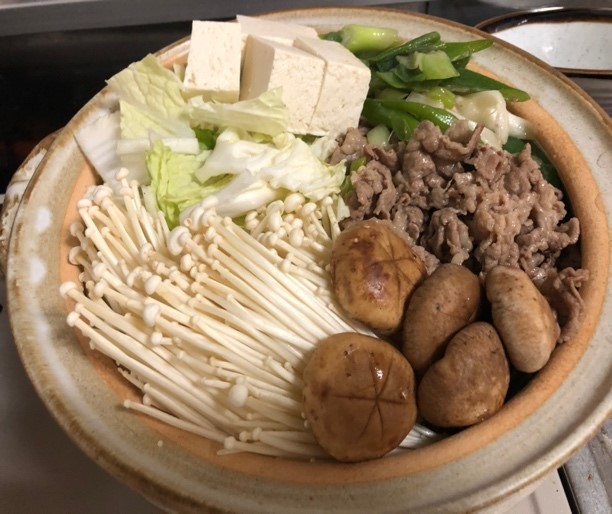
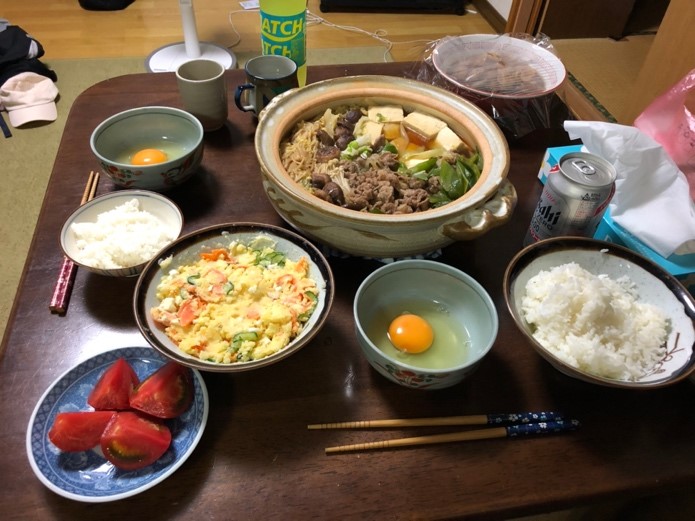 (My cooking・Sukiyaki, potato salad, fresh tomatoes)
(My cooking・Sukiyaki, potato salad, fresh tomatoes)
5 Guest House Masago
I spent the first week of my working holiday stay at the temporary experience housing and the remaining week at Guest House Masago.
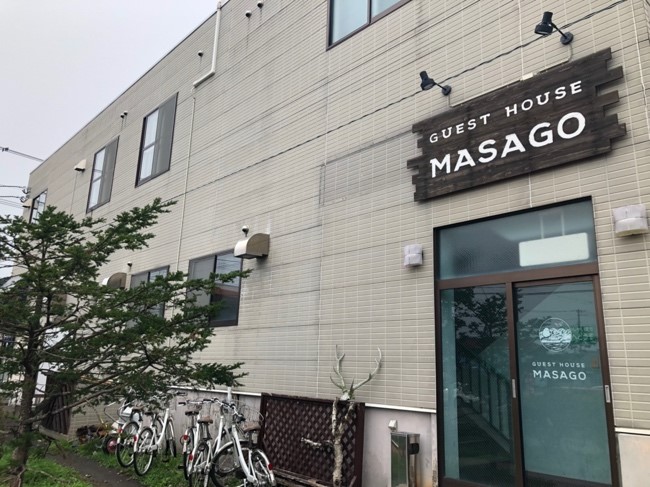
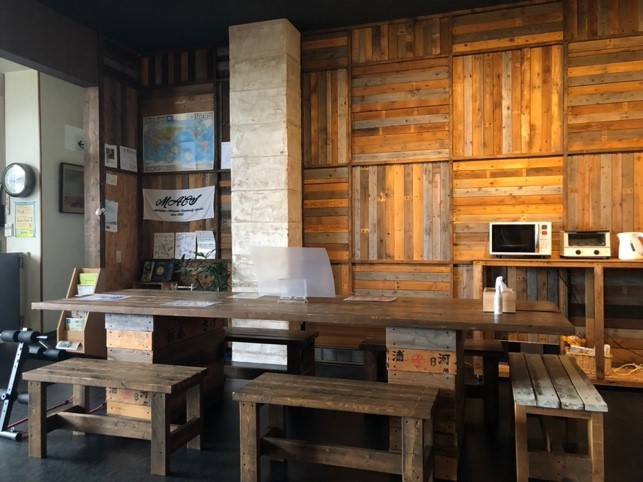
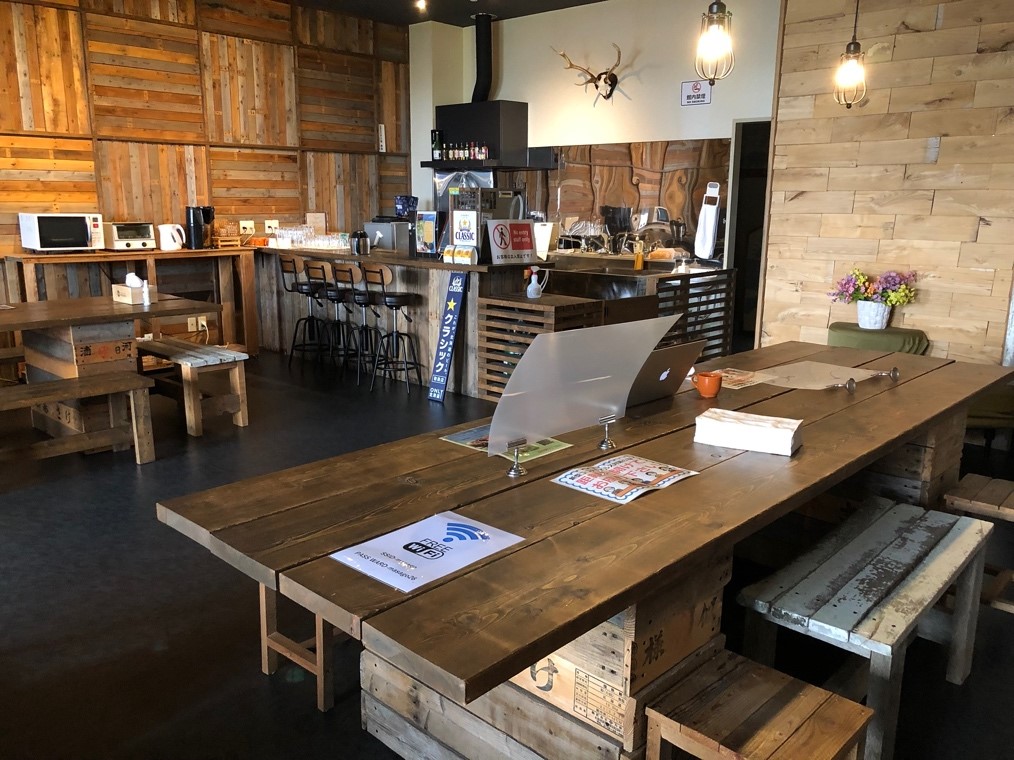
At Guest House Masago, the owner, Mr. Okubo, was very warm and attentive to me. I wondered how he could be so kind to me, who had come here on a whim from Tokyo.
I believe I saw Mr. Okubo’s genuine personality there.
The Guest House Masago also attracts travelers from various backgrounds, regardless of nationality or origin. That is why Masago is a place where an amazing exchange of experiences takes place among the visitors who are miraculously brought together for that moment. I found an environment at Masago where I could expand my worldview and values of things around me. I highly recommend Guest House Masago to those who want to have such an experience!
6 Conclusion
The two weeks I spent in Urakawa were rich and irreplaceable. I feel that was not only by Urakawa’s abundant nature and delicious food, but, above all, by the culture of the local people who make their living there.
In writing this article, there are so many memories that I could not even make them into words. In fact, only a fraction of the memories are introduced here, there was so much more of what we experienced left unwritten.
Through these blessed Urakawa lifestyle experiences, I have come to love Urakawa, which is rich in nature, food, and people. I encourage you to enjoy the Urakawa lifestyle as well.
The theme of my working holiday was to create a “second home”.
And for me, Urakawa indeed became “my second hometown”!
I am grateful for the warmth of the people of Urakawa, its history, culture, nature, food, and all the opportunities!
Written by Yuki Nagami
